Greetings Everyone
Well, I’m back in Brazil. I spent two months back in Oz and the parents are a lot better but I’ve decided to cut the trip short and not ride any further north into Brazil, Venezuela, Colombia or Ecuador.
Instead I’m heading west into Bolivia, and Peru via Machu Picchu and Nazca. Then south into Chile and finally Valparaiso where Kitty will be crated up and sent back to Oz.
It was good to see Marcelo and Beth again. I arrived at Sao Paolo airport late at night and being the fantastic people that they are they drove in town and picked me up. We spent the next couple of days doing a couple of local bike rides and some maintenance while I got myself de-jetlagged.
I added a new feature (?) to Kitty. In the photo below you can see what looks like a car radio antenna. It’s actually a kite string cutter. What happens at certain times of the year in Brazil (and some other countries) is that kids have kite fighting battles. Part of the kite string is coated in glue and ground glass and the idea is to cut the string on your opponent’s kite. That’s fine but sometimes stray lines hang down from power lines or the little buggers are known to fly them at motorcycles and the riders get injured. Don’t ask me why they do it, they just do. As a result you will see a lot of the motorbikes with these antennas that have a string cutter or a hook fitted at the top.
I’m travelling back over the same road that I used earlier to get to Marcelo and Beth’s but now heading west. From here I’m going to the Bolivian border. The countryside is mostly flattish with some rolling hills in the distance to break up the monotony. As I’m riding along there are sugar cane plantations as far as the eye can see.
One thing that does break up the monotony in the countryside is the sight of a motel that’s usually located a few kilometres outside of a town. The meaning of some words can change between countries for example; in years gone by, Australians asking for Durex in England could end up in a sticky situation. The same thing applies to asking for a motel in Brazil. A motel here is a place to go to for a few hours of discreet extracurricular canoodling and from the size of the motels there is a lot of canoodling going on. They are usually well away from the road with high perimeter walls with separate gated entrances and exits to keep the guests from getting curious about each other. They have a similar idea in Mexico and they are called love motels by the locals. We always planned to stay in one as they also have individual shutter door garages to keep the nosey at bay but are great for keeping motorcycles secure.
Marcelo suggested that on the way to the Bolivian border I take a detour through the Pantanal area and stay in Bonito for a day or so. The Pantanal is an enormous tropical wetland area in the south west of Brazil that extends into Bolivia and Paraguay. Bonito is a tourist town for the area and I booked into a snorkelling trip down the Rio da Prata. If ever you want to wear an unflattering piece of clothing, put on a wetsuit and be transformed into a fat seal. Before you ask, there are no photos. The river is slow flowing and crystal clear with many different fish species. The weather wasn’t fantastic, overcast and then rain later on so by the end of the trip we were all chilled but after a hot shower and the hot lunch they provided it was a good day.
Marcelo recommended a place to stay in Bonito that was very posh. Usually the places I stay at are somewhat more down market and the facilities can be a bit agricultural in the way they do things. For example, for me a hot shower at the end of the the day is a must. One common way they heat the water is by using a shower head that has a built in electrical heating element.
I know what you are thinking; shower, water, electricity, shock, death? I’ve never really had a problem with one of these showers apart from the odd arcing noise when switching them on or off but sometimes the way they have been installed does worry me. Here are a few dodgy installations for your viewing pleasure.
I discovered the air con in one room I stayed in wasn’t working. I saw that it wasn’t plugged in and from the burn marks on the wall there must have been one helluva of a bang.
The Brazilian border formalities were just that but on the Bolivian side it got interesting. In addition to the normal immigration for me and paperwork for Kitty I had to visit the local police station and get a Orden De Traslado (Transfer Order) form. Luckily there was another person who needed the same paper work done so I followed them into town.
Thirty minutes later I’m sitting in a police station twiddling my thumbs as they slowly fill out the form. This is a new piece of bureaucracy that I haven’t come across before, they want to know my itinerary through Bolivia and that info gets added to the form. What happens to it? No idea, I guess I’ll find out later on.
After my police friend finishes the form he rubs his fingers together in that subtle but unmistakable way that says “how about giving me some cash?” I respond in that subtle and unmistakable look that says “I’m a dumb tourist and I have no idea what you are talking about” he becomes a lot less subtle and in the end I said “no pagar” (no payment) he shrugged his shoulders and hands it over with a disappointed look. This was the first time in South America I’d been asked for a bribe and I was surprised it had taken so long to happen.
I wondered what I was going to do with my new Transfer Order and I soon found out at a check point about 20km down the road. I was flagged down and they took all my paperwork, entered details into a book, gave me an official looking stamp then and sent me on my way. I wondered how often I would have to do this, as it turned out this was the only time that any official looked at it including when I left the country. Bureaucracy is a wonderful thing.
Later in the day I saw the turn off to the village of Agua Caliente. I’d met a Brazilian rider group the previous day and they had told me they were heading to this area to do some off road riding. I decided I would do a detour and see if I could find them. The village was only a few hundred metres down the road so it took me about 1 minute to reconnoitre the entire place and decide that I might as well keep going. As I rode back to the main road I could see black and angry clouds ahead so it was time to go to Def Con 1 rain protection. My memories of the Brazilian rain storms were still fresh in my brain cell.
As I stood next to the bike getting out my rain gear I could smell petrol, lots of petrol. I looked down and saw petrol gushing out over the gearbox and running over the very hot exhaust pipe. I turned off the fuel tap and the flood quickly became a trickle and stopped.
I had no idea how long I had been leaking fuel but I knew that I was damn lucky that it didn’t catch fire or run out while I was in the middle of nowhere.
I knew exactly what had happened. The fuel pipe that feeds petrol between the two sides of the tank had either worn out or split and until I fixed it I was going nowhere fast. I rode back into the village running on the fuel left in the carburettors. As I mentioned before, this was a tiny place and the only sign of commerce I saw earlier was a closed shop so I wasn’t all that hopeful about finding a place to stay but an intercity bus was parked outside a building that turned out to be a hotel. I managed to explain that “mi moto tiene un problemo” and Kitty was soon parked under cover, I had a room and things were looking up.
To fix the broken pipe meant removing the air cleaner box from the bike which is not a quick job. I didn’t have any replacement pipe but cutting and blocking up the old pipe would work for a while until I could find some.
While I was working on the repair the black and angry clouds arrived with a vengeance. The rain bucketed down and there was a spectacular lightning and thunder show. I kept thinking how much fun it would have been to have run out of fuel in the middle of nowhere and then fix Kitty while getting drowned in the third biggest rain storm since the flood. I definitely double dodged a bullet today.
The next day I headed off and my first priority was to find fuel. Gas stations in Bolivia are far and few between and sell poor quality 84 octane fuel. Just to make it a bit more interesting I had read that sometimes they won’t sell fuel to foreigners.
The reason for this is that the cost of fuel is heavily subsidised by the government and they recently decided that foreign registered vehicles should pay a much higher price than the locals (fair enough). This rule is enforced by having cameras at all gas station and you have to provide all sorts of details from your licence, passport and vehicle that have to be entered into a computer so it’s a PITA to sell fuel to a foreigner. Sometimes they can’t be bothered and just refuse to fill up.
Luckily I had no problem today but later on there was fun and games.
Heading west, the next major city was Santa Cruz de la Sierra which is the state capital of the eastern part of Bolivia. Big cities are always a challenge with mad traffic and finding accommodation can be a challenge but this time I had luck on my side.
I met Felipe who was on a weekend ride with some friends, I asked him where in Santa Cruz was the area for hotels and he suggested that I ride with him into town and he would help me find a place to stay. Sounds like a plan.
I didn’t see much of his friends as they switched into hyper drive and faded into the distance. It was an uneventful trip into Santa Cruz apart from one incident with the native wildlife.
As I was riding along I saw a spider run across the road, I know it was a spider as I could clearly see the movement of the very large and very hairy legs. And it was a seriously big spider I was at least 50 metres away from it when I first spotted it running with those eight hairy legs. I guess it would have been the size of a small dinner plate. I would have stopped to take a photo of it but it had disappeared into the grass and I wasn’t going to look for it in case I found it.
I. Do. Not. Like. Spiders.
When we got to Santa Cruz Felipe suggested that I stay at his house, rather than searching for a hotel. Again the best part of the trip is not the places but the people you meet.
I spent a couple of days in Santa Cruz with Felipe and his brother Carlos. The guys took me to a parts place and they had exactly the pipe that I needed (at about a tenth of the cost from a bike dealer) and went for a ride around the area. We called into the local BMW dealer and got an invite to a press event the next evening. While we were there the sales guys and mechanics were looking over Kitty. They started laughing about something. Felipe told me that one of the mechanics said that Kitty was older than he was. Bloody cheek.
The next evening I put on all the luggage and bags for the full effect and rode back to the dealer. People came over to have a look at the prehistoric motorcycle from overseas. The local newspaper reporter asked me a few questions and took photos of fat Kitty. I have no idea if it made it into print.
Heading west from Santa Cruz I’m leaving the warmth of the Amazon basin and climbing into the Andes Mountain range. The previous night Felipe showed me the route to Cochabamba and gave me some advice about travelling in that part of the world. It’s not a good idea to play the tourist by stopping along the road and taking photos. The locals may be growing Coca plants and are a bit paranoid about strangers.
After a morning send off from Felipe and Carlos I headed out of Santa Cruz. I have to admit I was a bit puzzled as the way my GPS was telling me to go, it didn’t really gel with the information that Felipe had given me but I kept seeing signs for Cochabamba so what could be wrong?
From memory I left Santa Cruz at the crack of 0930, as usual my planned early start, wasn’t. After leaving the chaos of the city, the road snaked up into the mountains and the supposedly main road turned into rocky gravel track and later in the day as I climbed into the mountains through the cloud layer it became a muddy quagmire. What the hell was going on? I kept thinking that I must have taken the wrong turn somewhere but I kept on seeing signs for Route 7 Cochabamba and that was what I was supposed to be on. Things sort of improved later but every so often it was back to the gravel and mud.
I was cursing Felipe so much it was a wonder that his ears didn’t fall off into two smouldering piles of ash. This was not what I called a main road and it was going to take a lot longer than 8 hours to get to Cochabamba.
After 11 very long hours of riding I made it to Cochabamba well after nightfall and rode straight into the chaos of the market on my way to the city centre. Eventually I escaped from the mayhem and found a hotel, shower, food, cerveza, cerveza and cerveza. It had been a big day.
It was only later that night when I was looking at my maps that I discovered that there are two roads that run between Santa Cruz and Cochabamba. One that runs from the north of Santa Cruz and one that runs from the south.
Guess which road Felipe told me go on and guess which road my GPS chose? If you guessed they were different you would be right and I was very, very wrong.
Felipe, mi amigo, if you can still hear I’m sorry for the things I thought about you.
On my travels I’ve tried to stay out of the bigger cities as much as I could but now I’m travelling to a new city every day and I’m discovering how the familiar can become very different with only a very subtle change.
What am I talking about?
Traffic Lights.
Ok, you all know traffic lights, they go red, yellow, green, then repeat ad infinitum.
In some parts of the world the idea of red = stop and green = go is more of a guideline than a hard and fast rule but the basic idea applies everywhere.
I found out in Bolivia the traffic lights have a small difference in the timing of the light changes. Or more accurately they don’t have a difference. What this means is that as the light changes to red for me it’s changing to green for the cross traffic at exactly the same time.
The practical upshot of this is when riding through an intersection by the time the second yellow photon hits you the cross traffic is off and running and they take no prisoners.
Seasoned drag racers have slower reaction times compared to a Bolivian bus driver trying to get back to the depot.
The next morning was another cold grey day. My brain cell was even slower than normal when I realised that I’d left my backpack at the cafe where I had breakfast earlier. I sprinted back and amazingly it was still hanging on the back of the chair. One of my biggest challenges travelling is remembering to take everything with me when I pack up in the morning. I have the bad habit of leaving presents for random strangers.
After leaving Cochabamba the road climbs even higher into the Andes. As I looked up you could see the clouds boil over the mountain tops and spill into the valleys below. I thought it looked wet up there, and I was right. Eventually I got to a village called Confital and it was time to stop and reassess the situation. By this time the temperature had dropped to about 8 degrees, the wind had picked up and was driving the rain horizontally. It was time to go to Def Con 1 rain protection. It took about 10 minutes to put on all the wet weather gear and heated vest (I love my heated vest) then another 10 minutes to warm my hands up enough so that I had enough dexterity in my fingers to buckle my helmet. I completely understand how people with exposure can die by not being able to do simple tasks like using a key to open a door.
As I rode along the altitude got higher, the temperature got lower and the rain had turned to sleet and snow. Eventually I was up at 4400 metres and the temp had dropped down to 1.5 degrees. I was worried that if it got any colder the rain would freeze on the road and I would have the joy of black ice.
It was a bit of a challenging ride at these high altitudes. The road was very busy with trucks going in both directions and Kitty had the power of a kitten so passing them took a very, very long time. The sleet had turned to snow and was getting heavier. Something I never realised about snow and motor biking is that snow sticks to helmets and you can’t see through it. So now I’m wiping the snow off my visor every few seconds.
After an hour or so the altitude dropped a few hundred metres and everything was transformed, the snow/sleet/rain stopped, the temperature rose a few degrees and there was even an occasional spot of sunshine, all was good in the world.
La Paz is the administrative capital of Bolivia and is one of the world’s highest cities. You enter the city from the El Alto area at 4000 metres and then descend to the lower levels of La Paz itself at 3500 metres. Unlike most other cities in the world where the rich perch on the hill tops so they can survey peasants below, in La Paz the lower the altitude, the more posh the area.
For the third time in a row I’ve arrived at a major city after nightfall and just like Cochabamba I’ve lobbed into the market area of El Alto. In this part of the world the minibus is King and the way many people get around. I swear that every single white Toyota Hiace that has ever been built anywhere in the world was jammed into that market area. It was just a sea of big white boxes on wheels and nobody was going anywhere. It took about an hour to get through three sets of traffic lights, a distance of about 150 metres.
The drivers were the most aggressive that I’ve ever encountered anywhere in the world. The moment the traffic moved forward they would start to cut across and try to push me out of the way. I really thought that I would get nudged and drop the bike. Picking up a fat Kitty would be the low point of the day.
Eventually I escaped from the maelstrom of the El Alto and headed down into La Paz and got into a hostel and collapsed, it had been another long day.
After a day in La Paz wandering around I decided to do a day trip on the North Yungas Road or as it’s more popularly known, the “Death Road”. Up until recent years this particular road was part of one of the main routes north from La Paz. A new bitumen road has been built but the old road is a winding dirt track that clings to the mountain sides after you leave the village of Coroico and is about 35 km long.
I can understand how it got its reputation. There are virtually no safety rails and much of the road is a narrow single vehicle track that has sheer drop off’s that are several hundred metres deep. There are passing points, but often it would be difficult for two cars to creep past each other but it was used by all sorts of cars, trucks and buses. Along the way there are crosses and memorials marking fatal accidents and down in the valleys you can spot the occasional rusting remains of a vehicle that has tumbled off the edge.
Nowadays this has all changed, the road is deserted and mainly used by foreign tourists who do day trips from La Paz and ride rented bicycles downhill to Coroico, or overseas TV crews boasting how they faced death and pretending to be terrified.
The only thing that worried me was that I decided to start at Coroico and ride uphill, I hoped that I wasn’t going to meet an out of control cyclist coming the opposite way. Then again the combined mass of me and fat Kitty would outweigh any cyclist by a factor of four to one so it wouldn’t be me who was bounced off the road.
That was later in the day.
My first problem was leaving the maze that is La Paz, fortunately my GPS eventually got me on the right road (I love my GPS) although I did have words with it when it expected me to ride Kitty along a street and then up a very long staircase to get to the next turn off. La Paz was one of the very few places where the GPS maps lacked some accuracy. I’ve been amazed at how spot on the maps have been for everything from the big cities down to tiny villages.
After getting onto the main road leaving town I ran into my second problem of the day.
No fuel.
I mentioned earlier how gas stations would sometimes not want to sell fuel to foreigners. It happened today. Every gas station leading out of La Paz would not sell me any fuel I kept being told “no facture” or “no invoice”. In other words they could not, or rather would not do the paperwork.
Mierde.
I only had about half a tank of the goats piss they call gasoline which was not enough for the day so there was no choice but to go on and hope for a sympathetic attendant.
Eventually just after an army checkpoint I spotted a sign near a road side stall “se vende gasoline diesel” Saved! The guy running the stall was happy to sell me a 20 litre container of fuel and I was happy to pay for it. The only thing that can be a problem with fuel from these road side vendors is not seeing the dirt and debris that is in the bottom of the container until it’s too late and gets poured into the tank.
Filters don’t fail me now.
With Kitty full of fuel (and a small amount of sand) we were ready to roll. La Paz was above the cloud layer and as we rode down to Coroico I hit this cloud and everything became foggy, wet and slippery.
Coroico has become a tourist destination for people heading north into the jungle or as a destination for day trips from La Paz. By the time I arrived it was time for a bite to eat.
Overlanding is a very small world. As I was sitting in the restaurant I recognised a sticker from Ben and Angie on the door. Seven years earlier we spotted a Globebusters sticker on the back of the Arctic circle sign in Alaska.
Heading back down the hill and a couple of turn offs later I was on the “death road” and climbing back into the mountains. It was mid-afternoon by this time and I met a few tired cyclists. The bad news for them was that the last stage of the ride was into Coroico. Did I mention it was a hill top town and they were at the bottom of a long and very steep track?
As for me I was heading uphill on gravel and that was going to be a lot more fun. In the Americas all vehicles are left hand drive and they travel on the right hand side of the road (mostly). The death road contradicts that rule and you travel on the left hand side of the road so that drivers going downhill have a better view on where the edge of the road is.
The road is cut into the side of the mountain that runs along the valley. Eventually it starts to gain altitude and the air cools down. A few streams cross the road and sections of the mountain that overhang the road have water dripping down making everything very slippery. Eventually I hit the cloud layer again and visibility dropped. As I said earlier, in the old days this would have been a sphincter clenching trip but I only passed one car and one road maintenance truck that afternoon.
Next morning the traffic leaving La Paz was almost as bad as arriving. Heading back through El Alto was the same sea of minibuses and maniac drivers. West of La Paz is Lake Titicaca, Copacabana and then the Peruvian border. Ferries are used to cross the lake and when I say ferries I mean flat wooden boats that flex and creak alarmingly as they cross the lake. The ferries vary in size, some of them are large enough to carry full size touring buses. Last time I was part of a large group of riders so there were many like minded individuals to help load and unload the bikes onto the ferry. You needed help as there were gaps between the dock and the ferry and there wasn’t so much as a deck on board, it’s more like a couple of heavy planks with the occasional hole. I should have backed Kitty onto the ferry and then I could have ridden off at the other end. Instead I did the opposite and on the other side was a big gap between ferry and dock that we had to haul fat Kitty over. Lesson learned for next time.
Tomorrow I’ll cross into Peru and make my way to Machu Picchu which is the most important milestone of the trip. Much to the disgust of my sub editors I think I’ll stop this post here so you can get a tea/coffee/beer/wine/scotch/rum/hard lemonade before reading my last missive.
See you soon at the next post.
Ian
P.S I’ve dropped in a few bonus photos below that have their own stories.
Sometimes the roads are steep
At a roadworks halt Marc and Ellie pulled up. In the small world of overlanding I’d met Ellie before in southern Argentina last December. Back then I wondered, how does she fit those dreadlocks in a helmet? Neva, any clues?
At the same roadworks stop this Peruvian rider had an unusual way of carrying extra fuel.

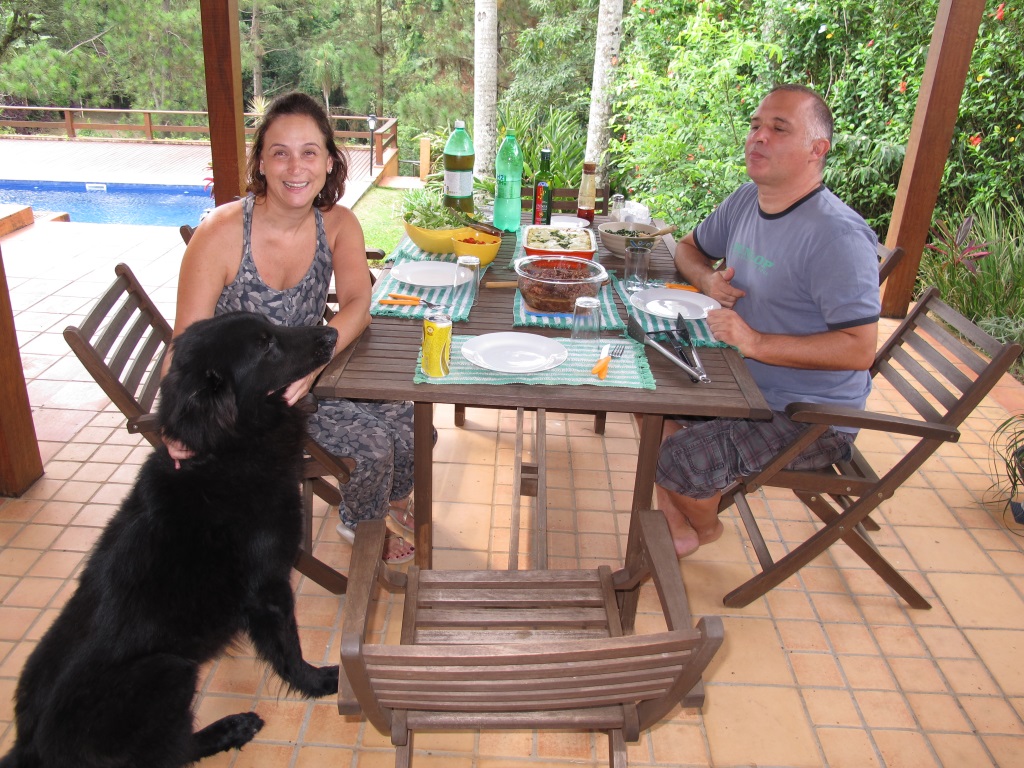
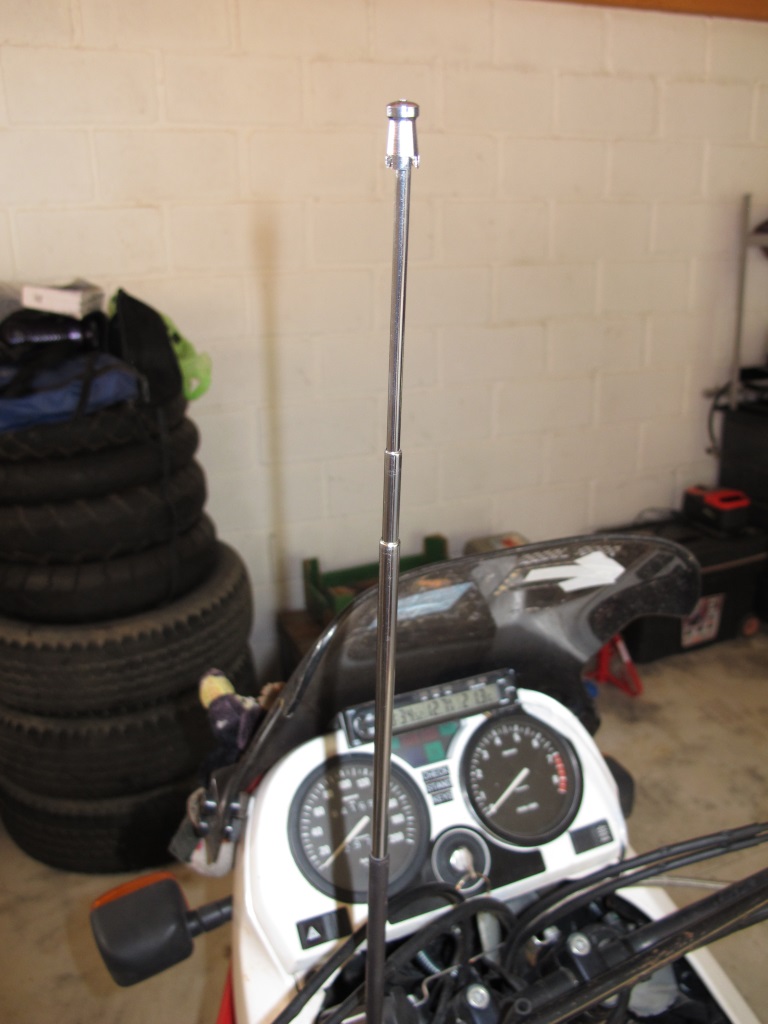
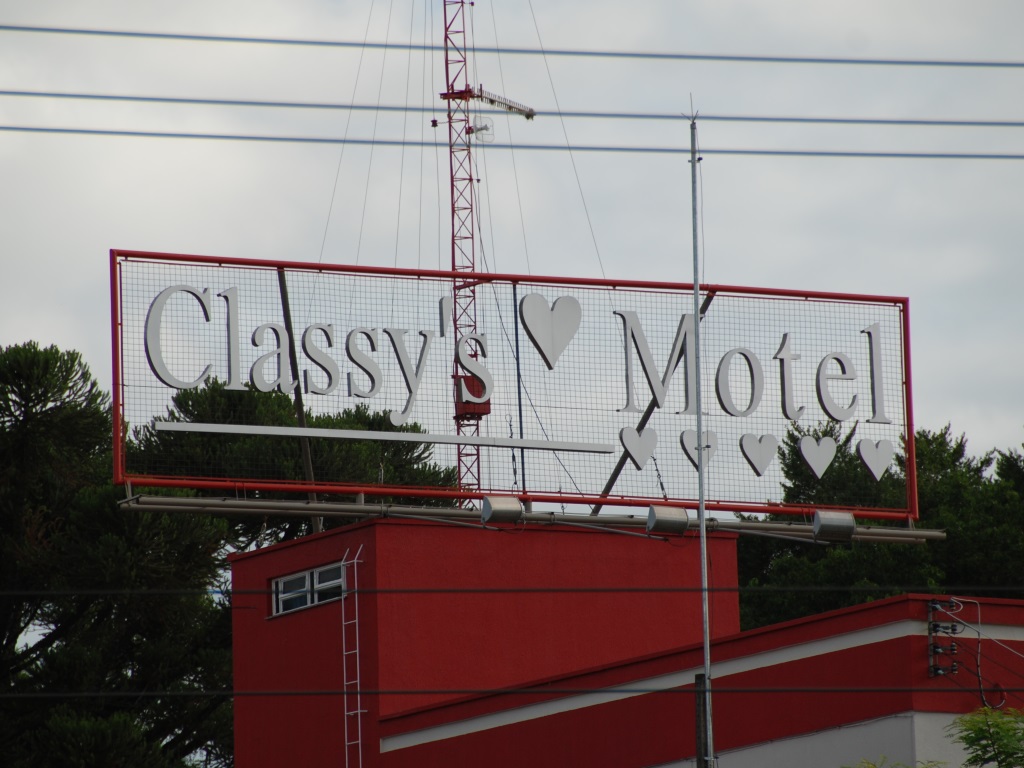
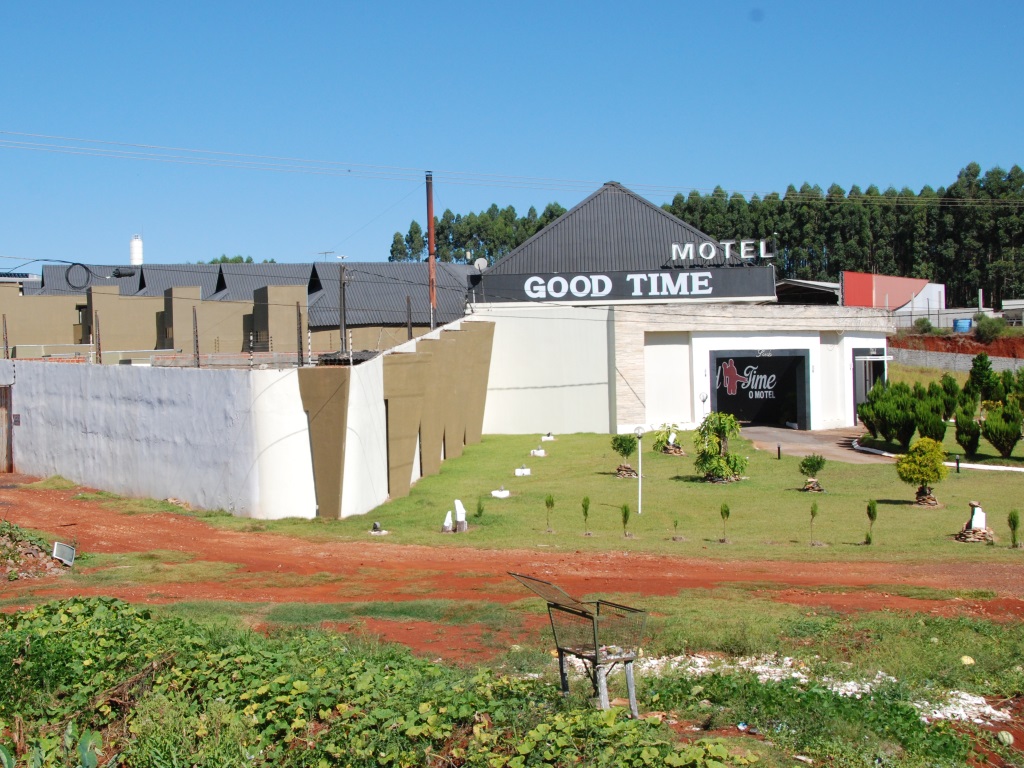
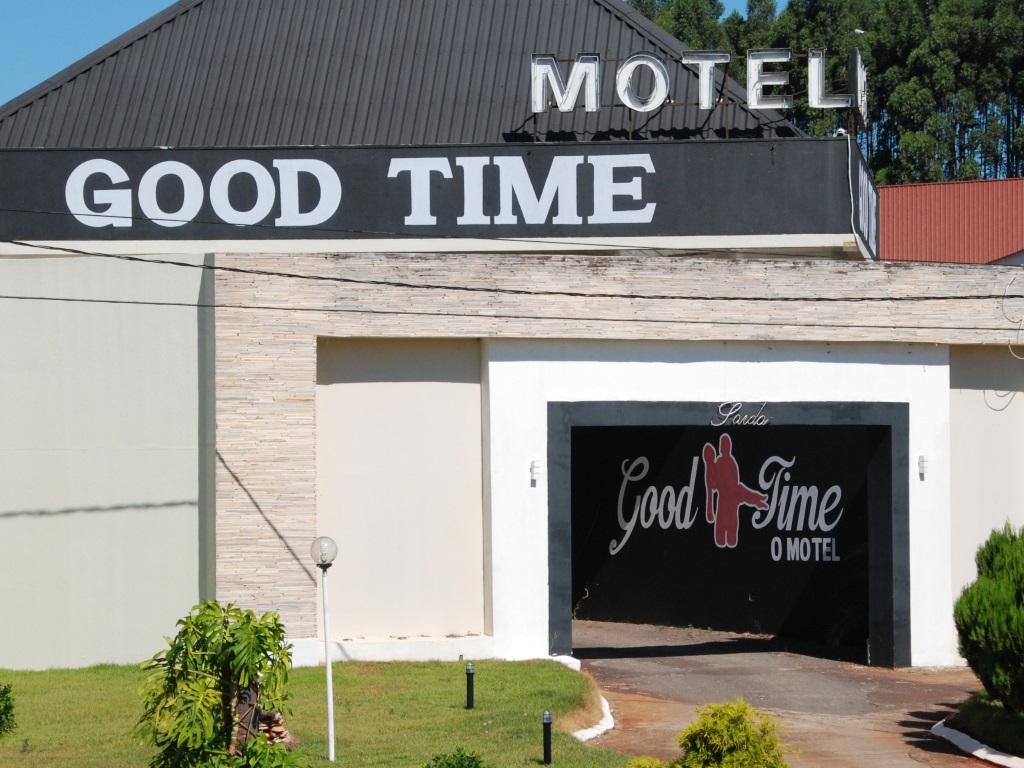
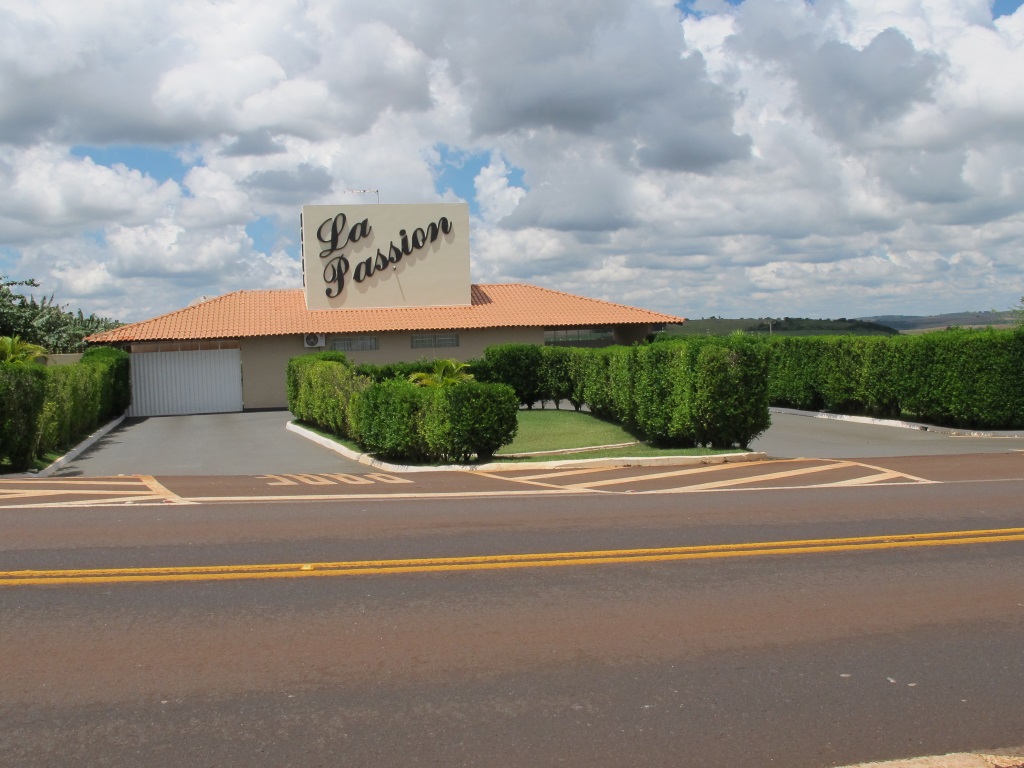
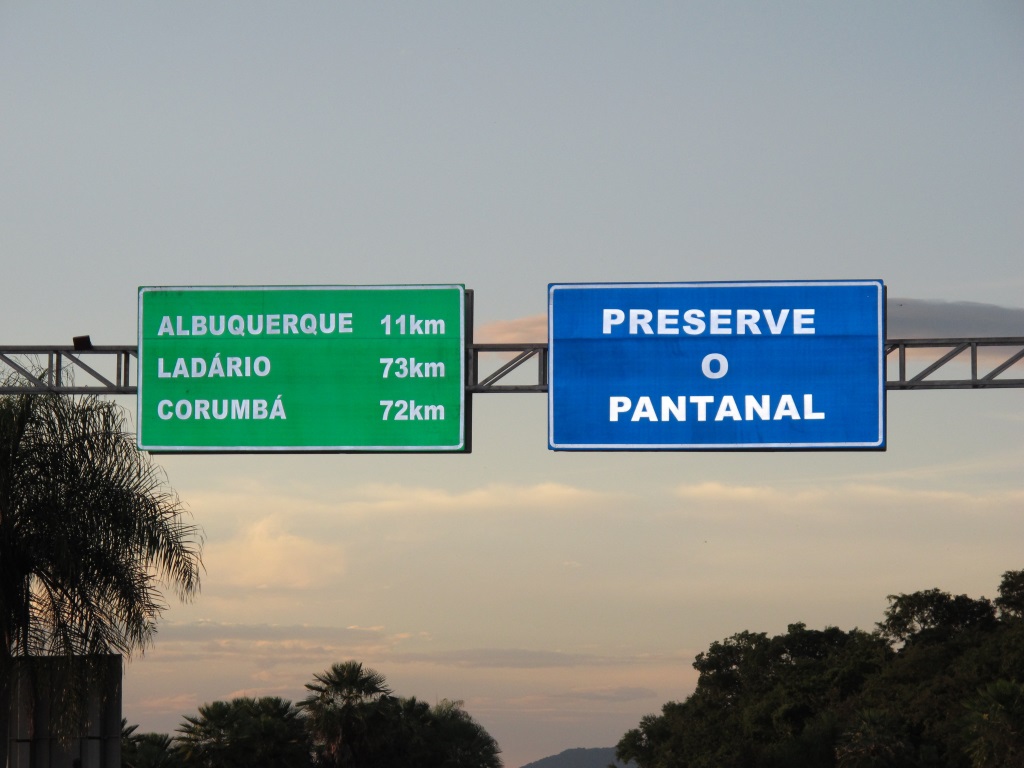
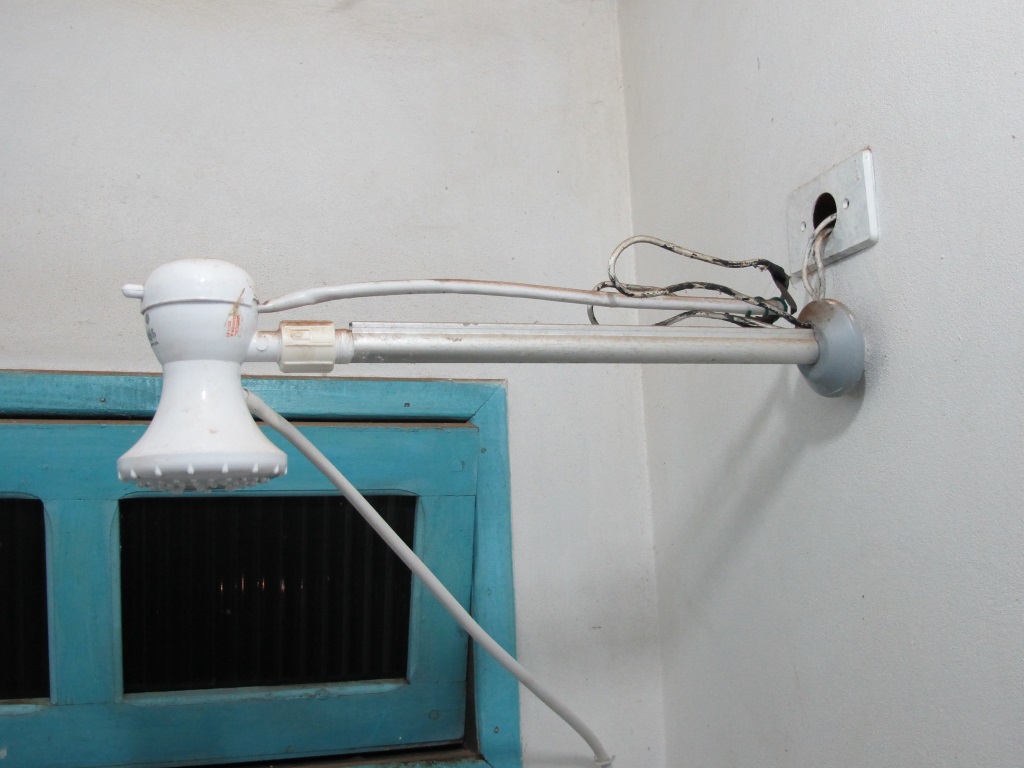
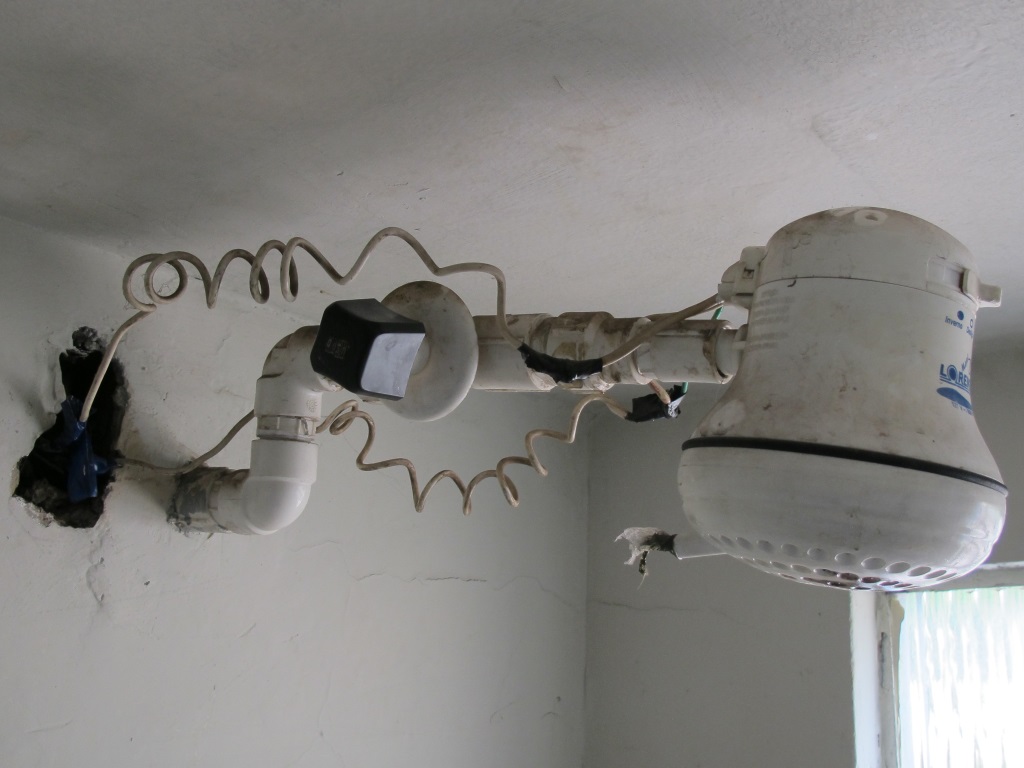
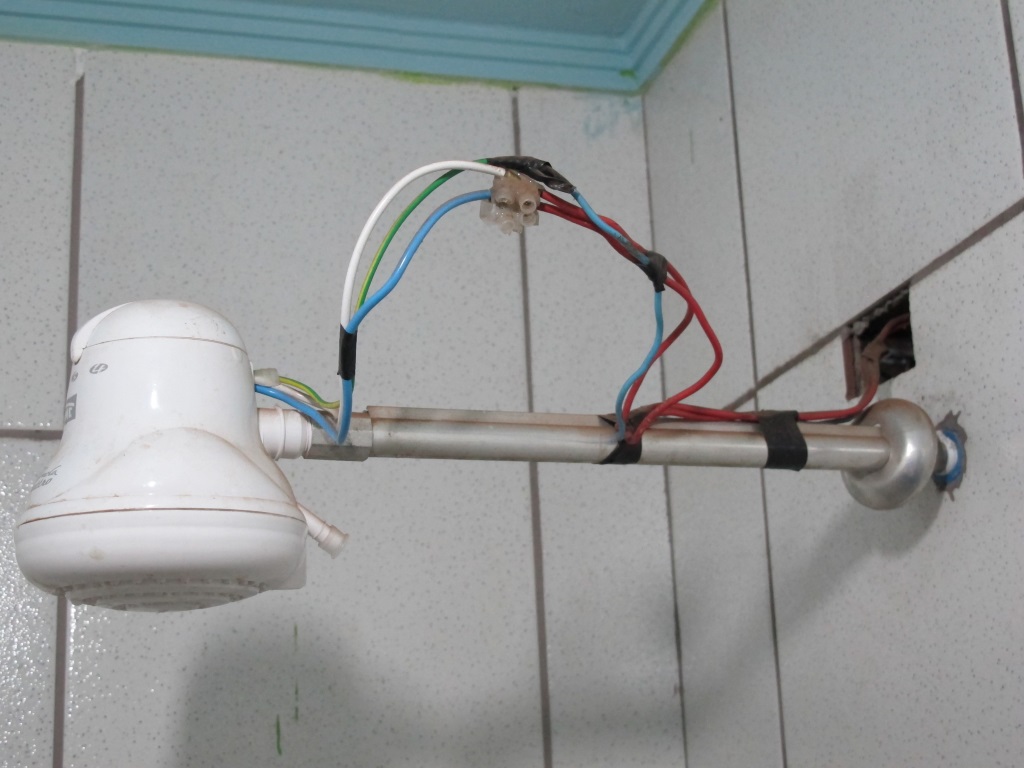
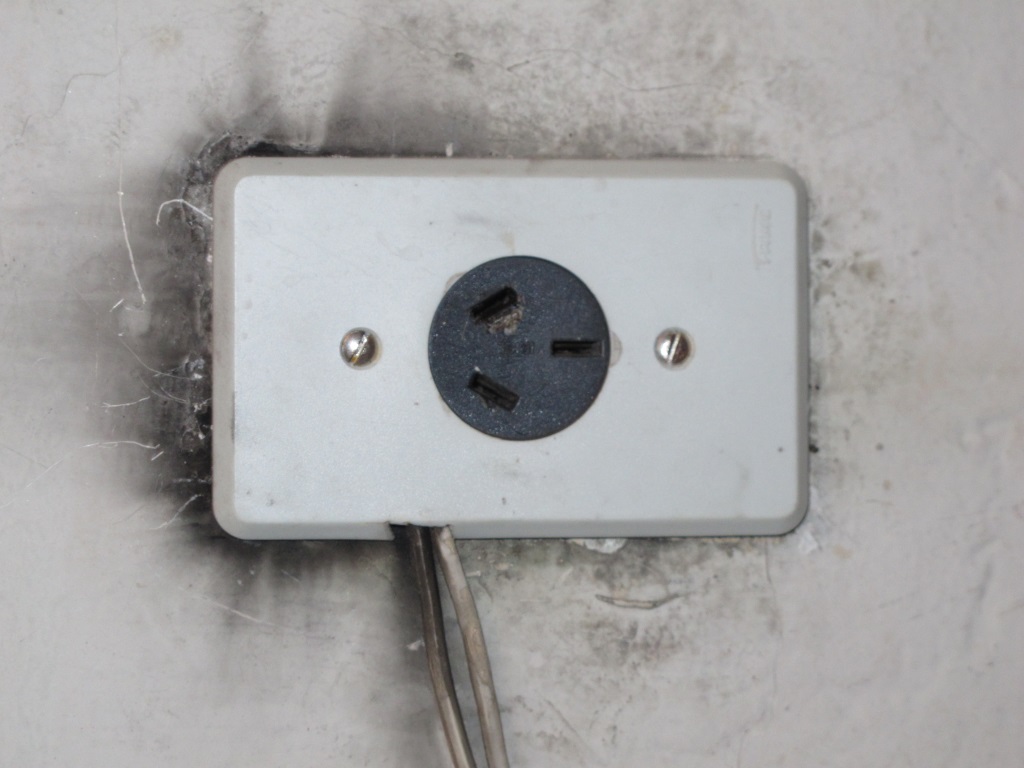
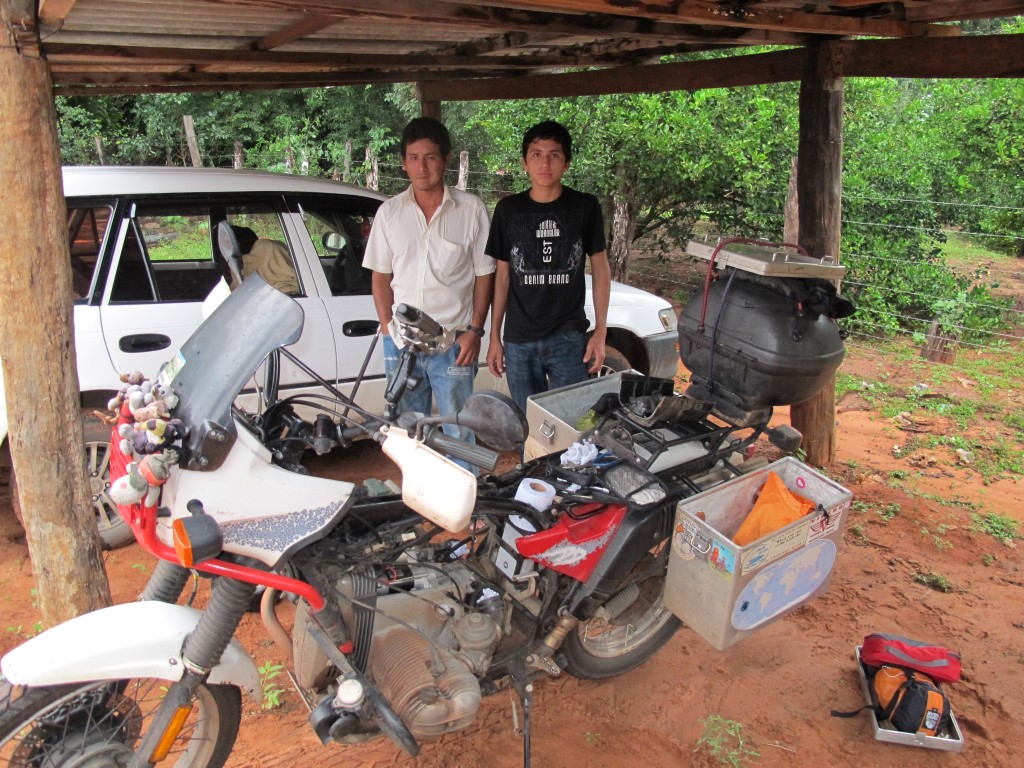
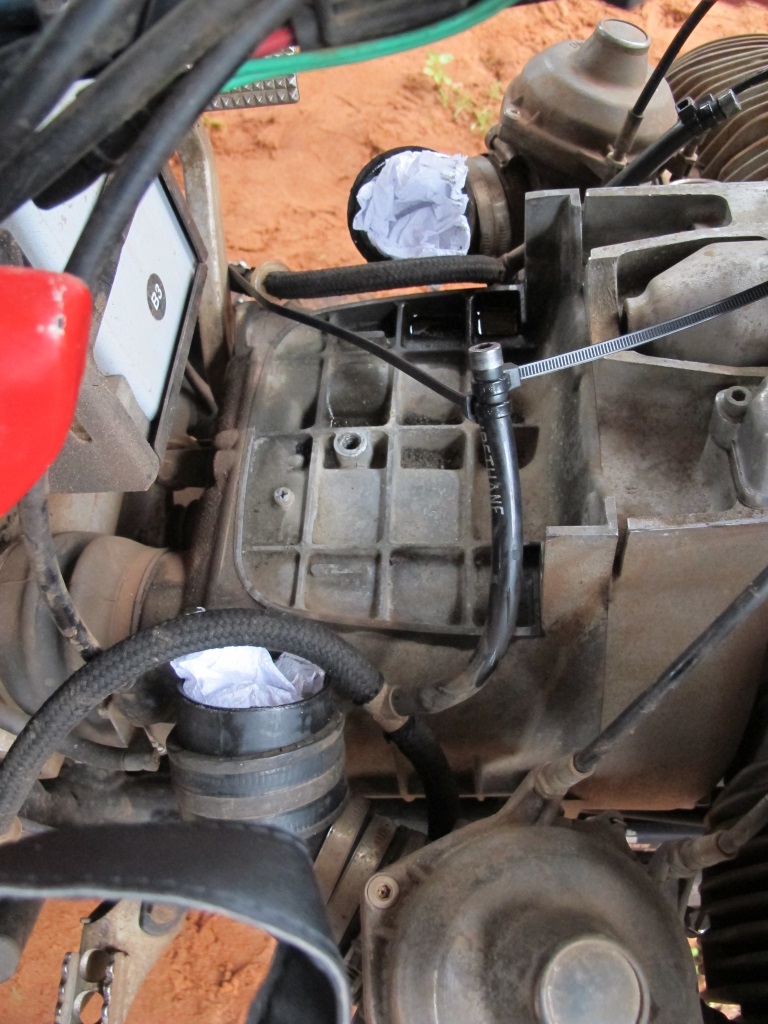
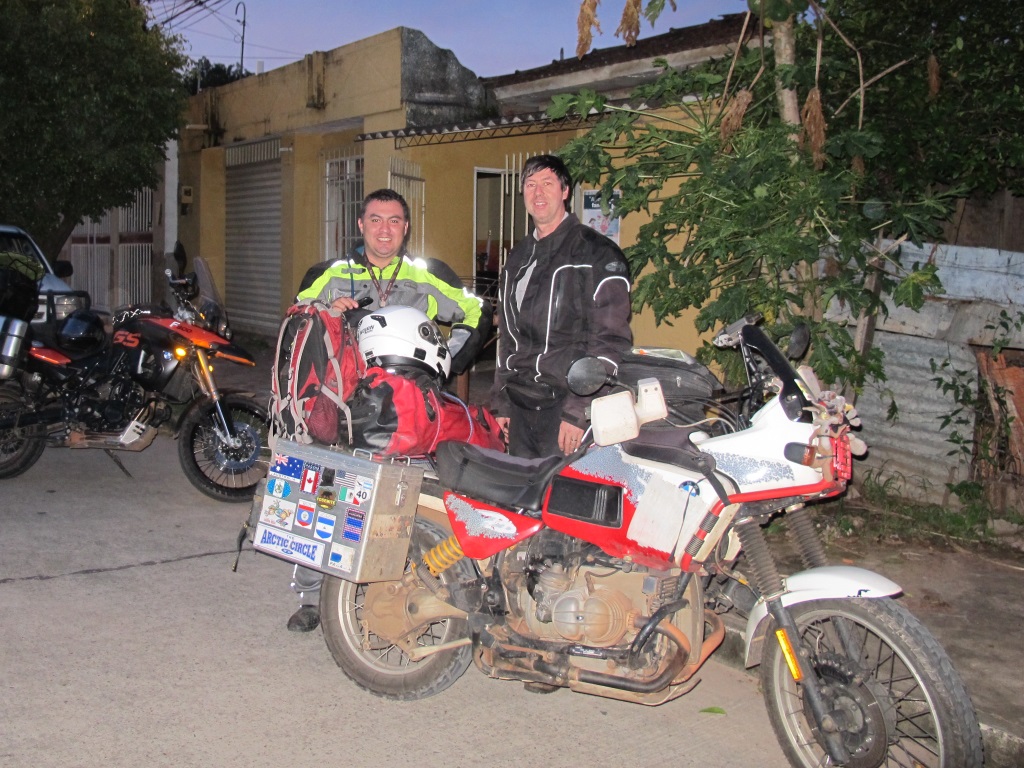
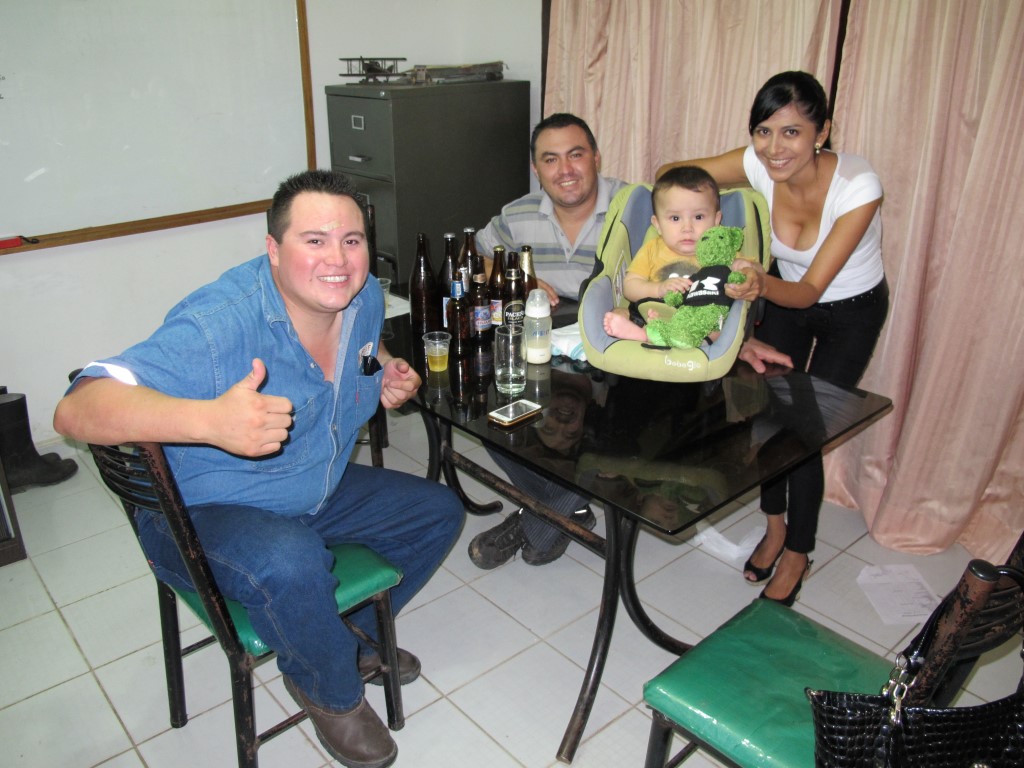
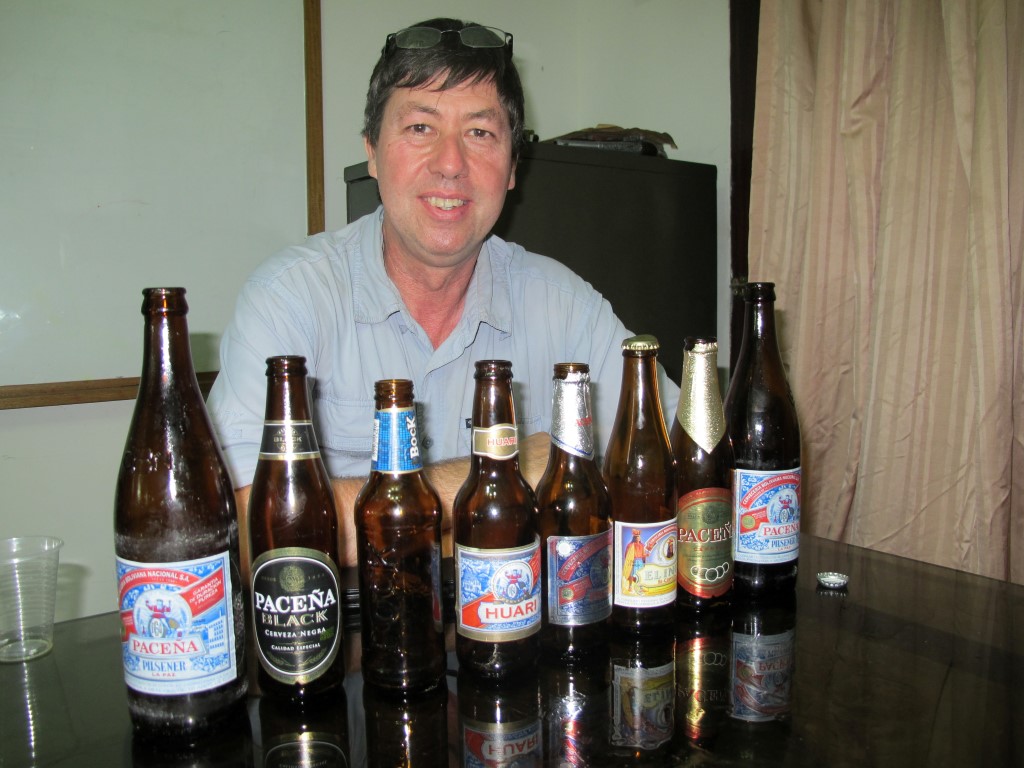
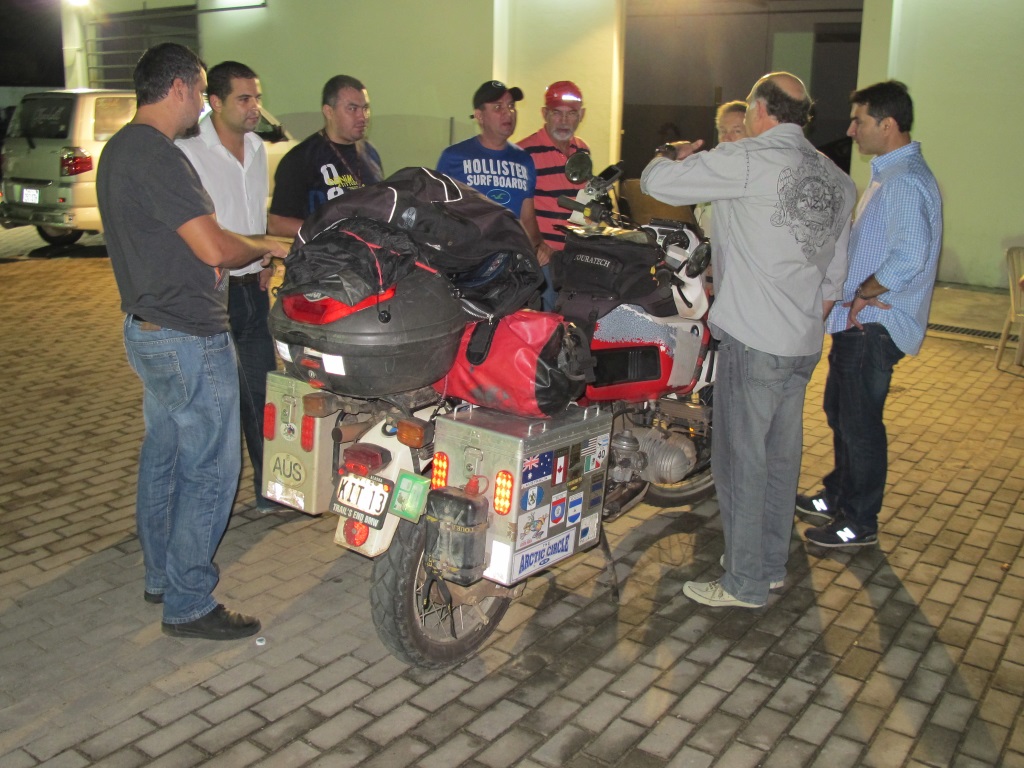
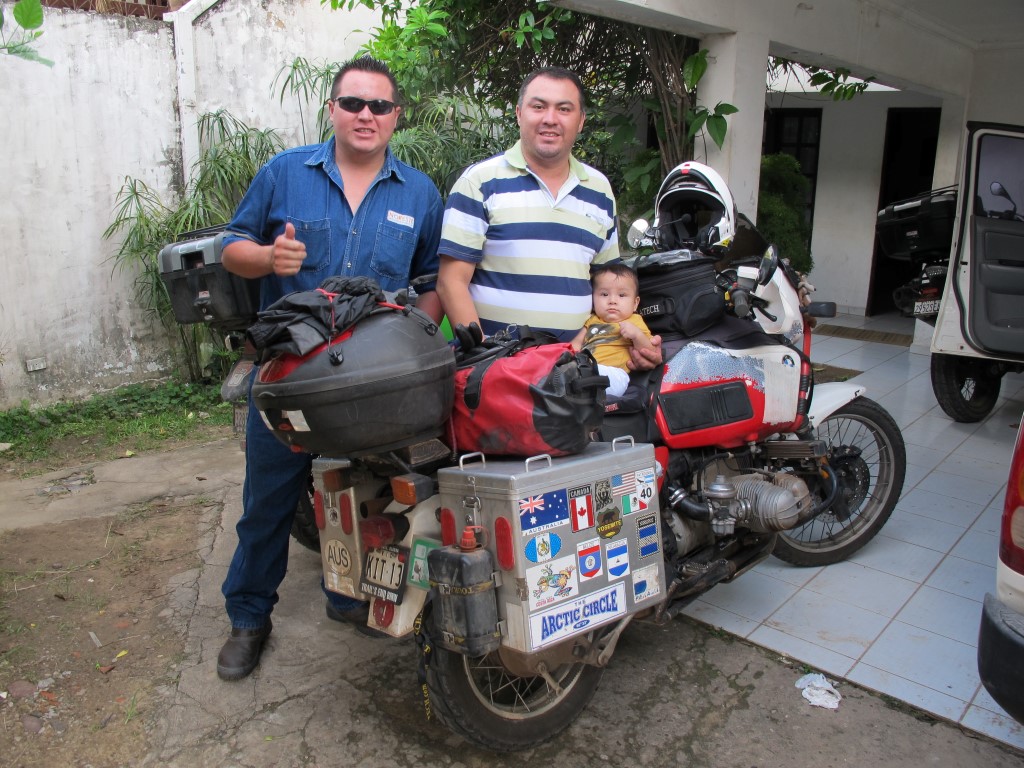
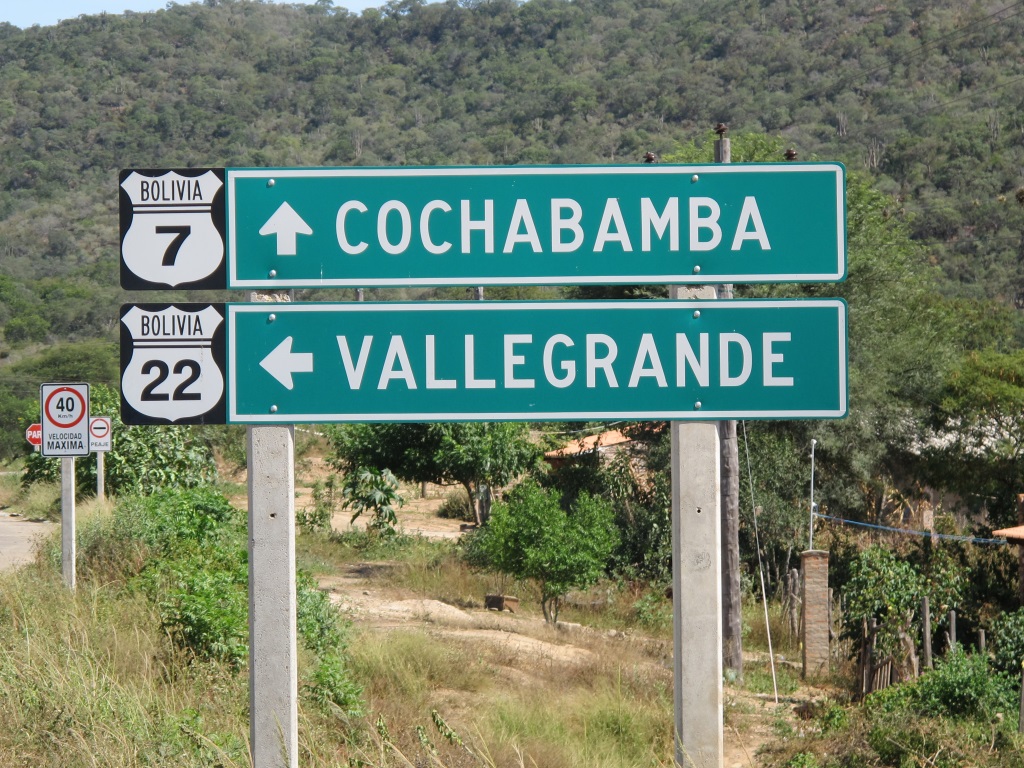
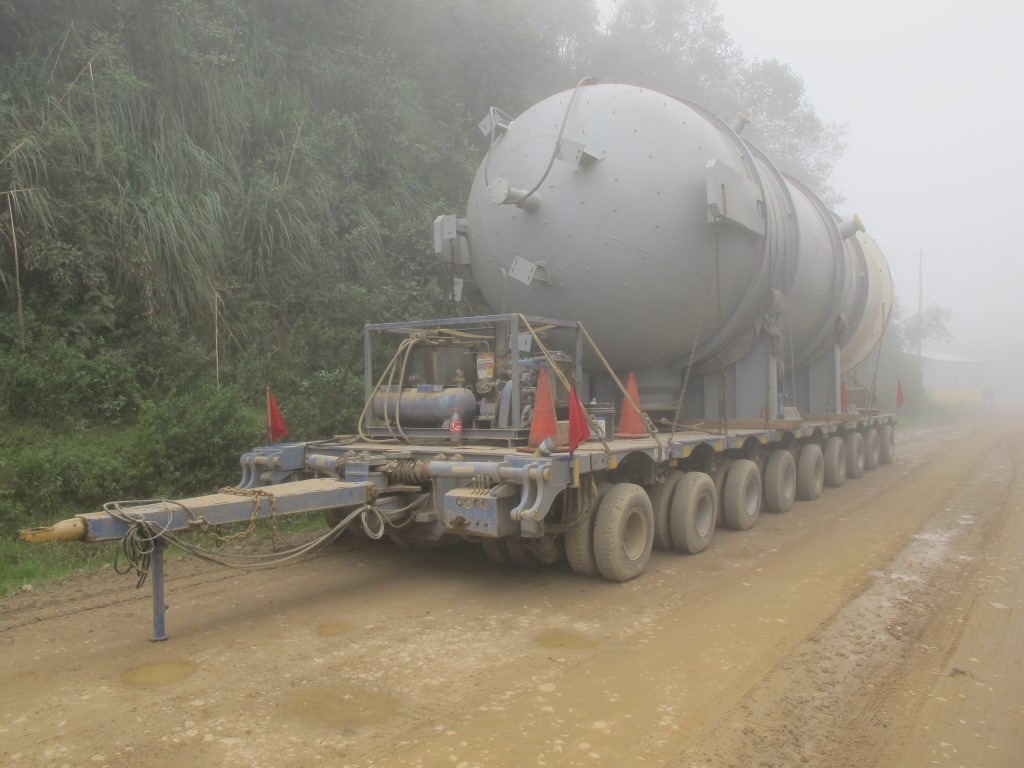
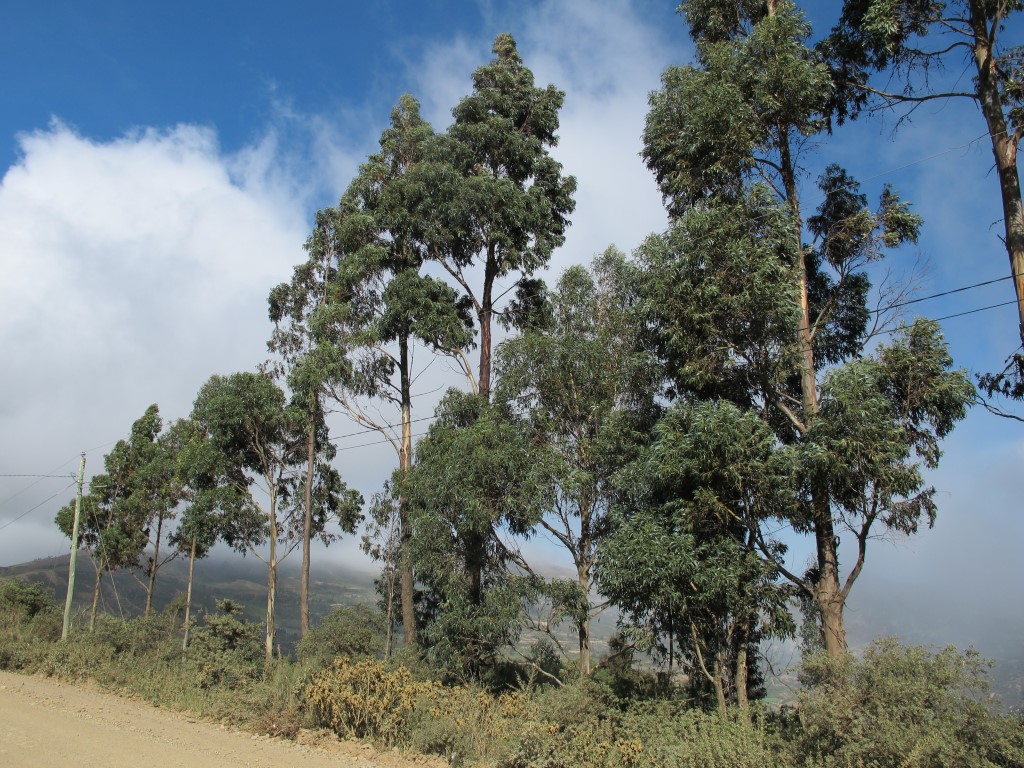
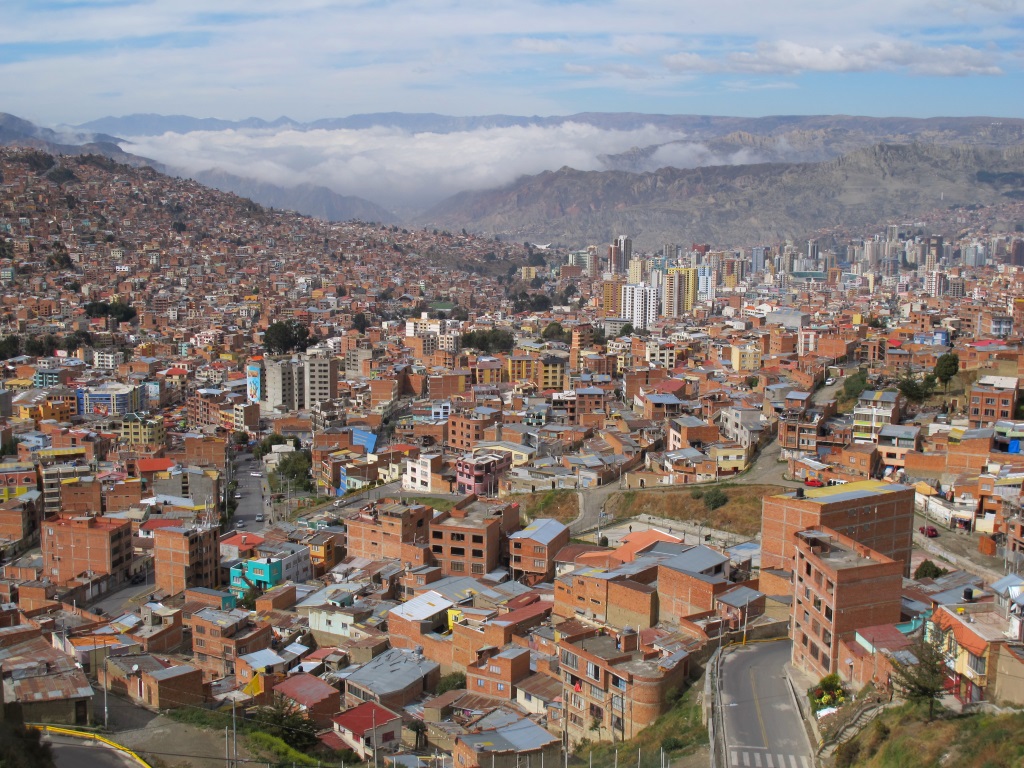
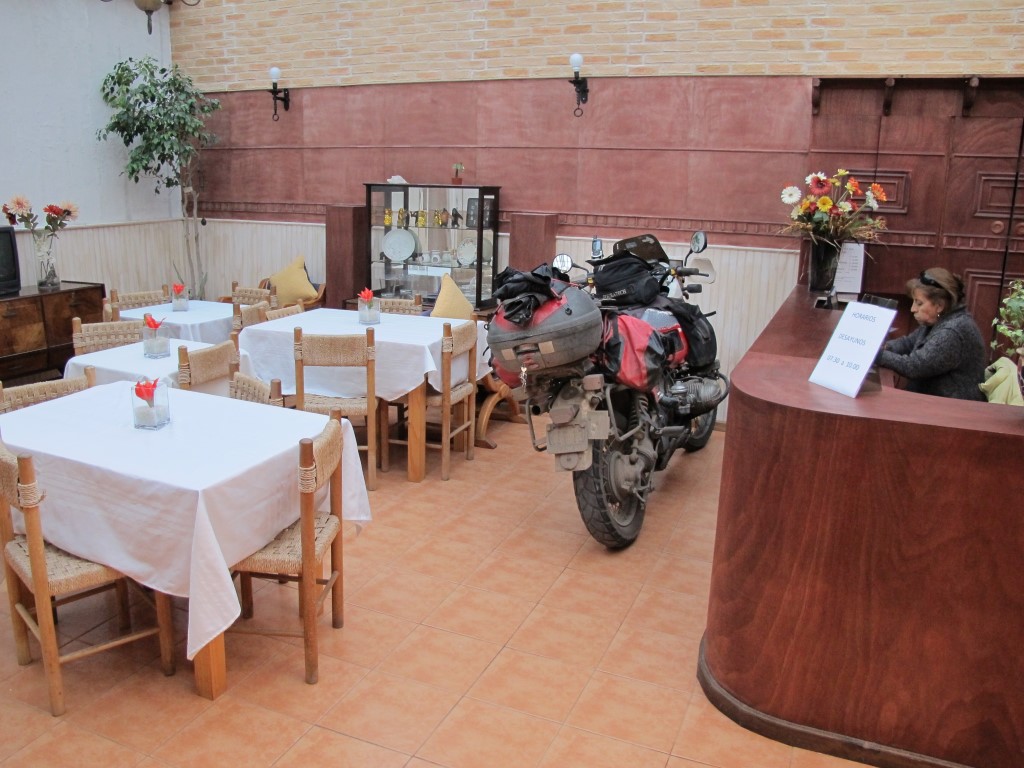
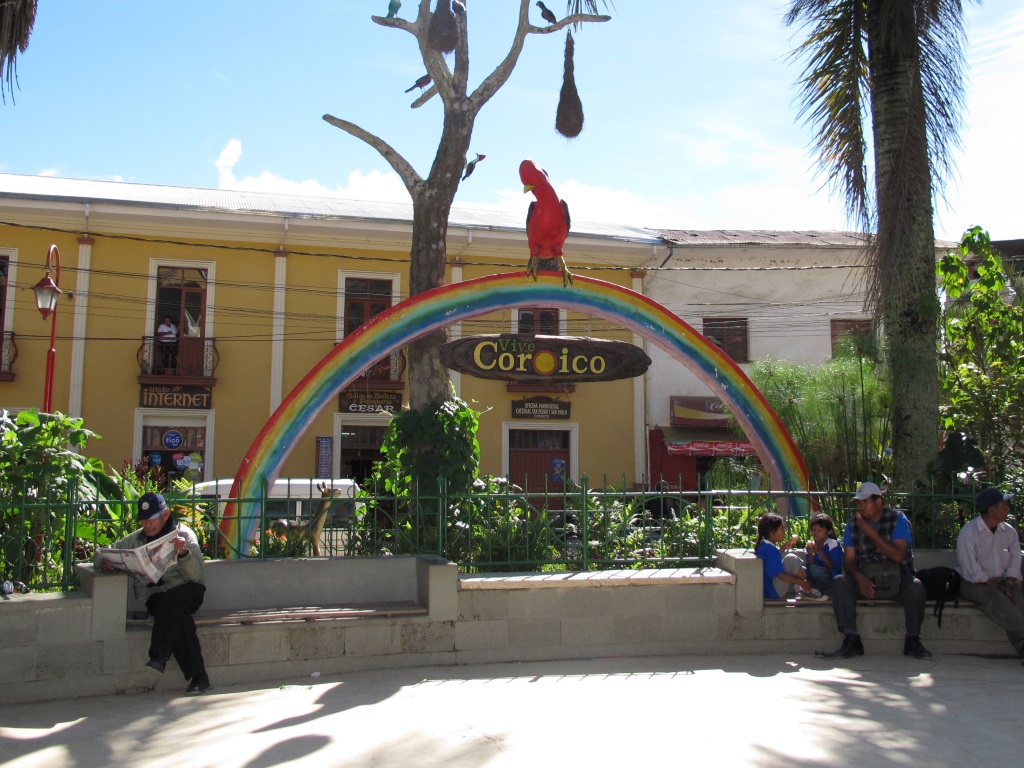
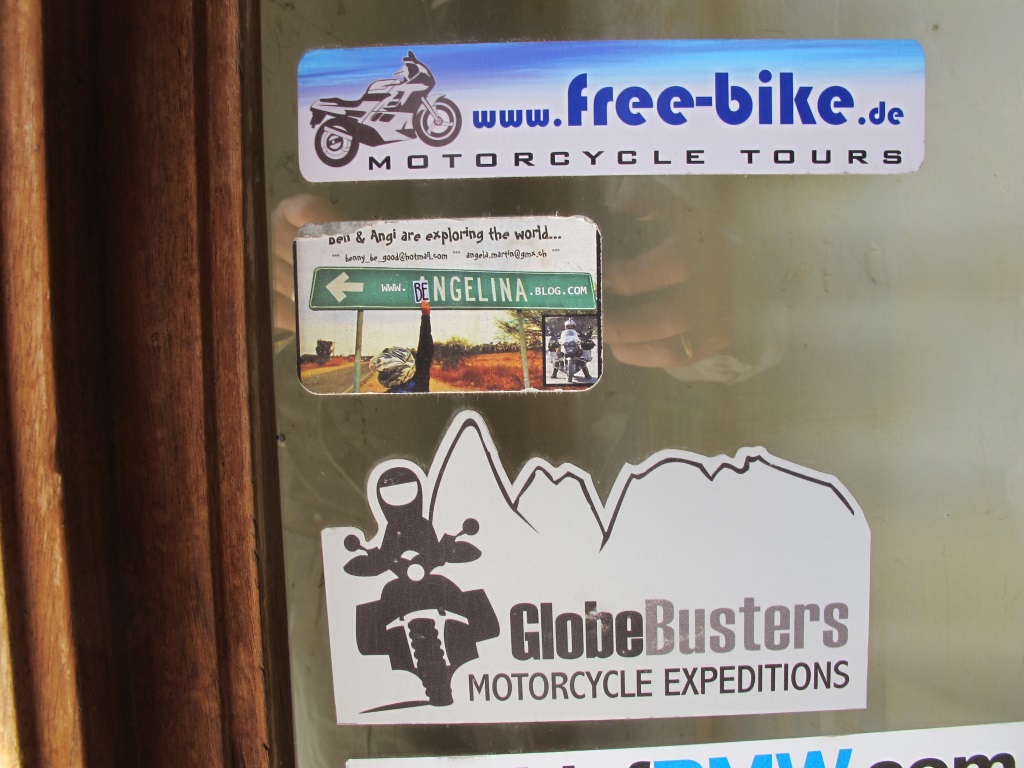
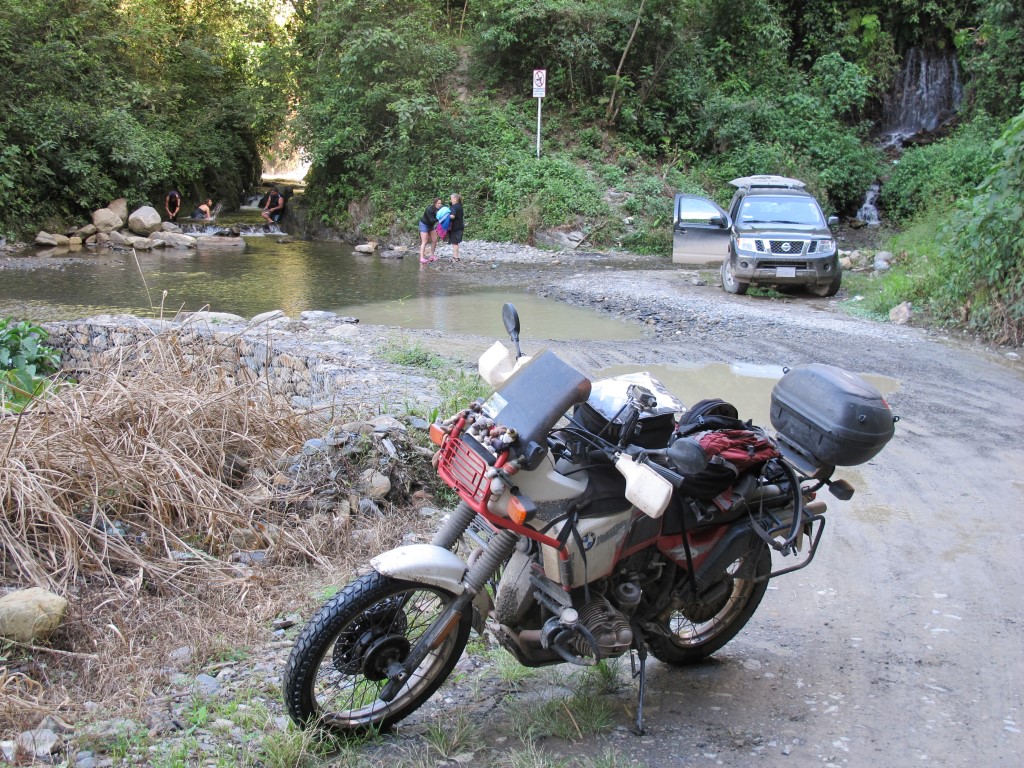
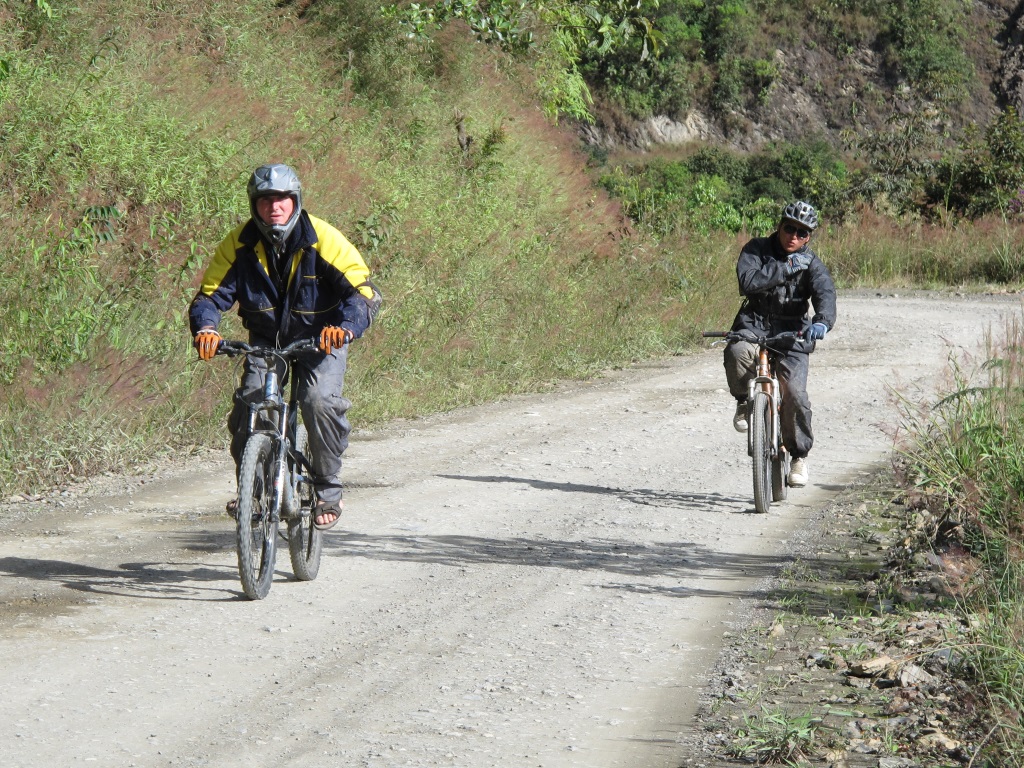
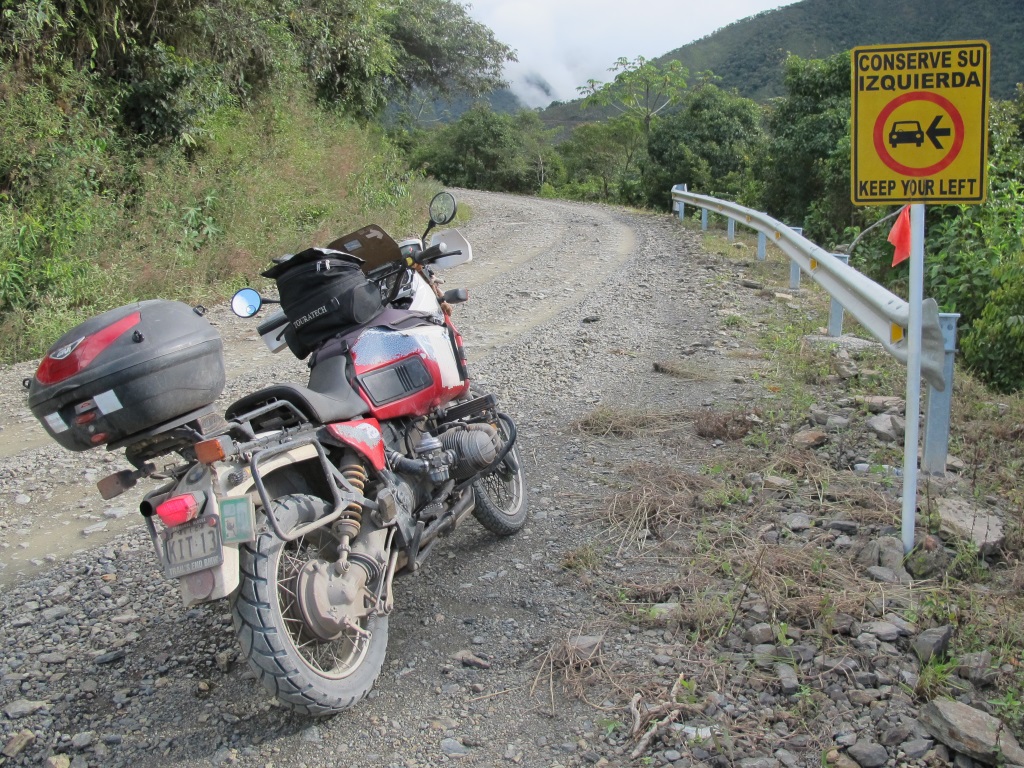
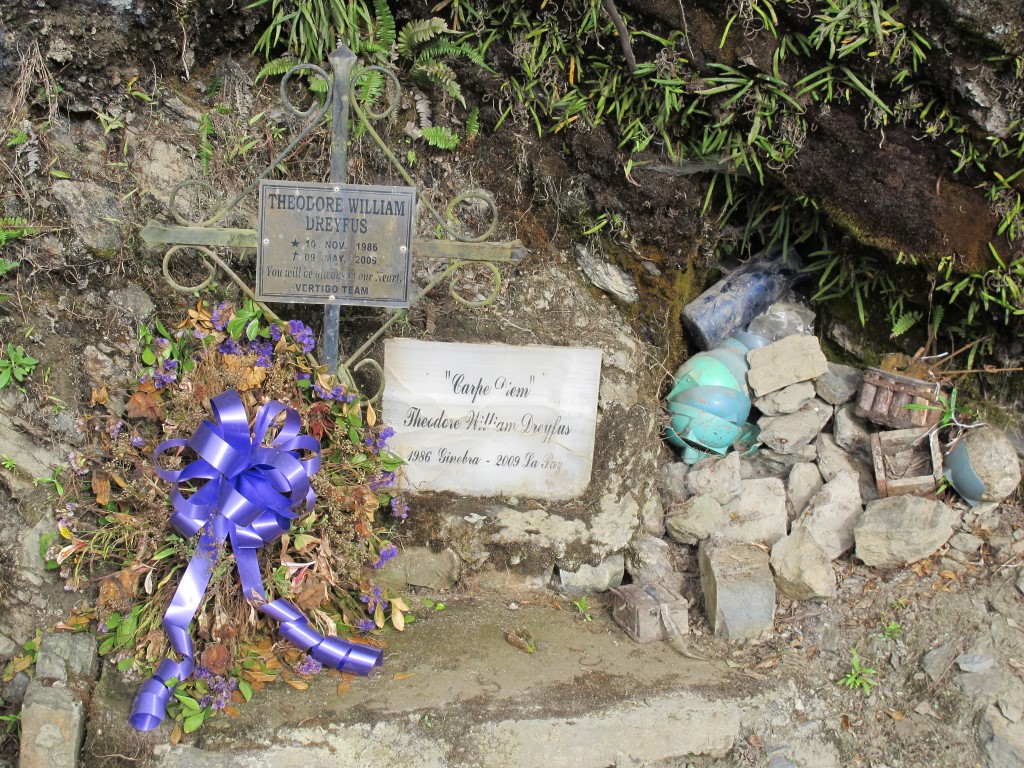
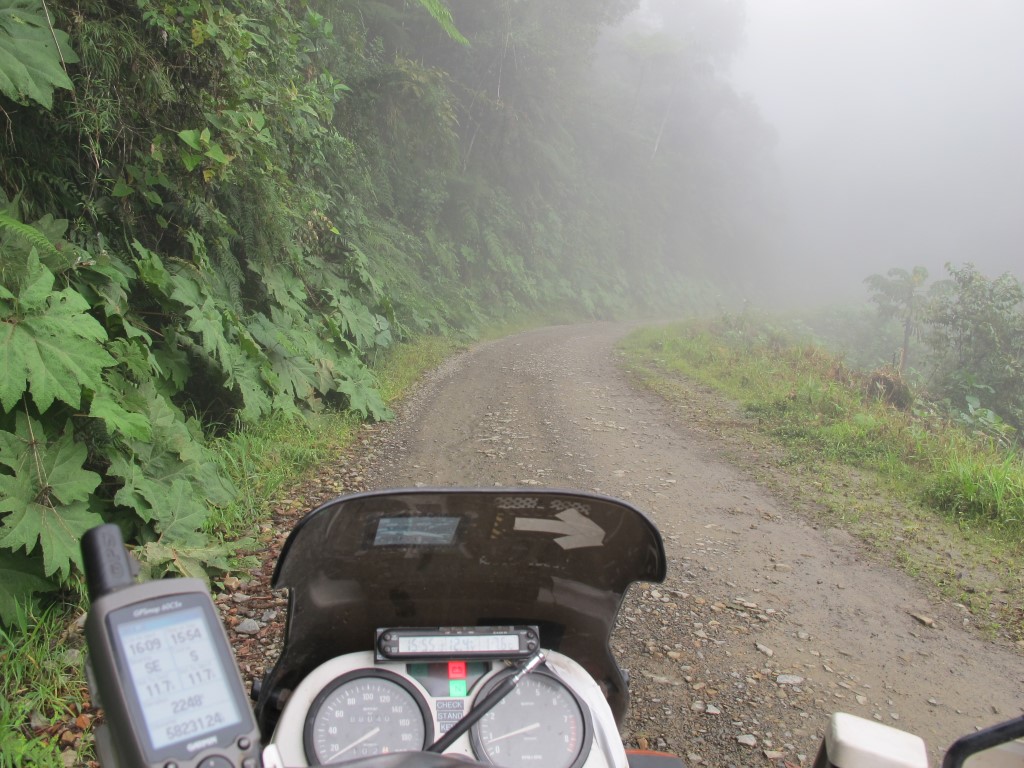
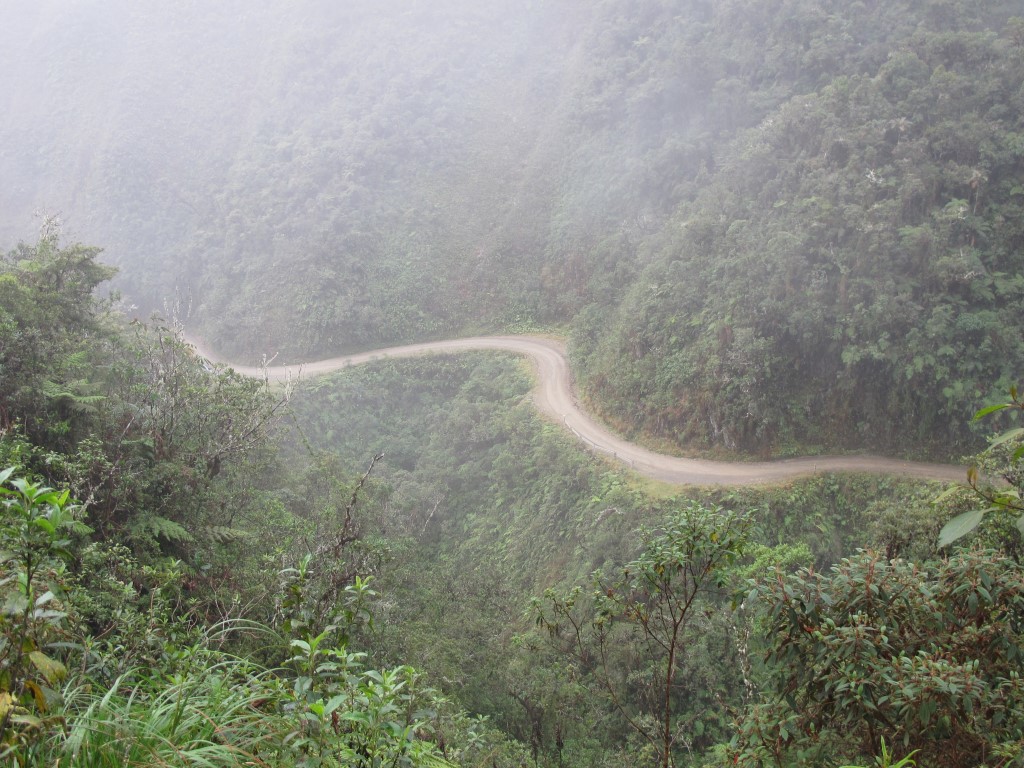
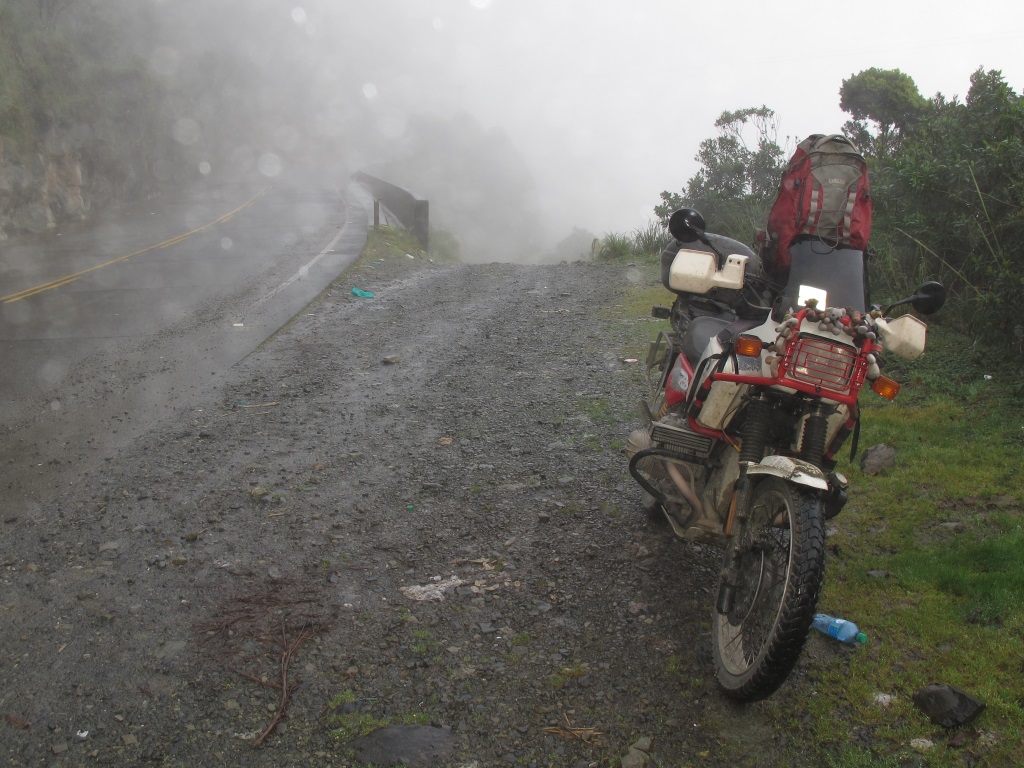
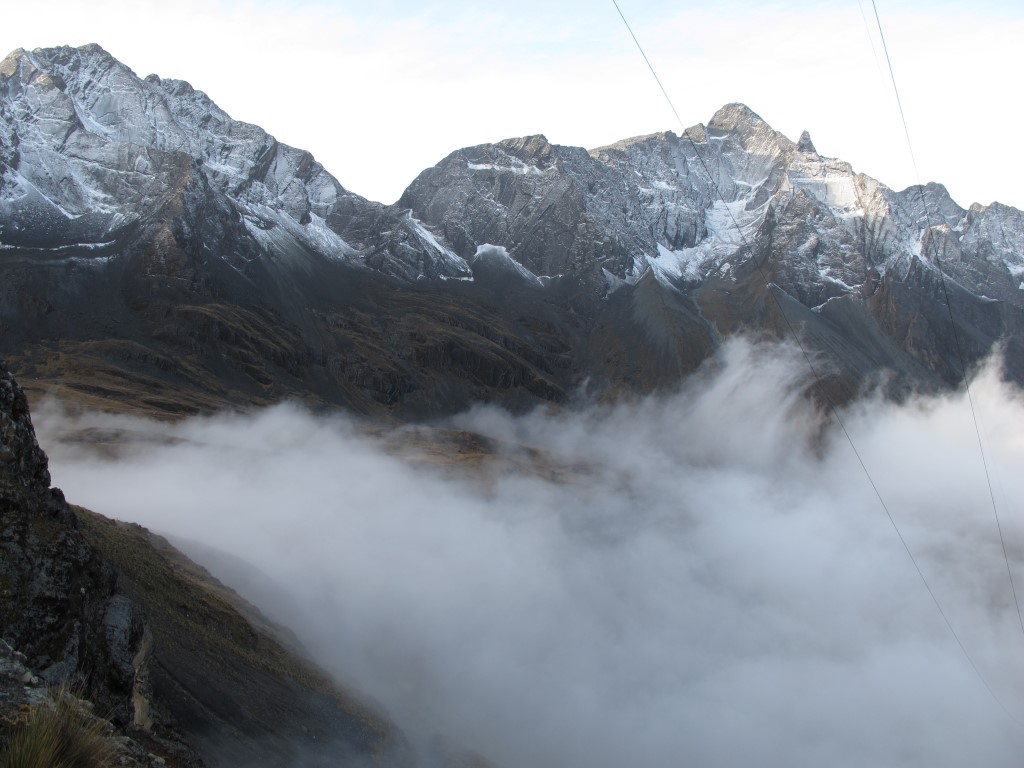
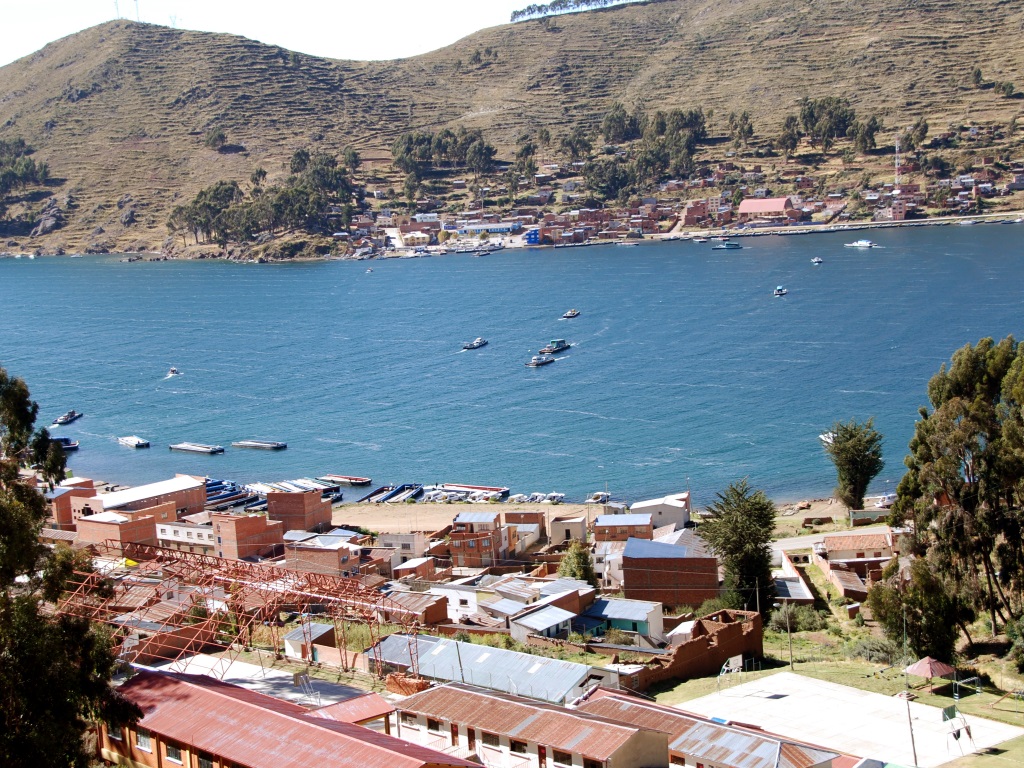
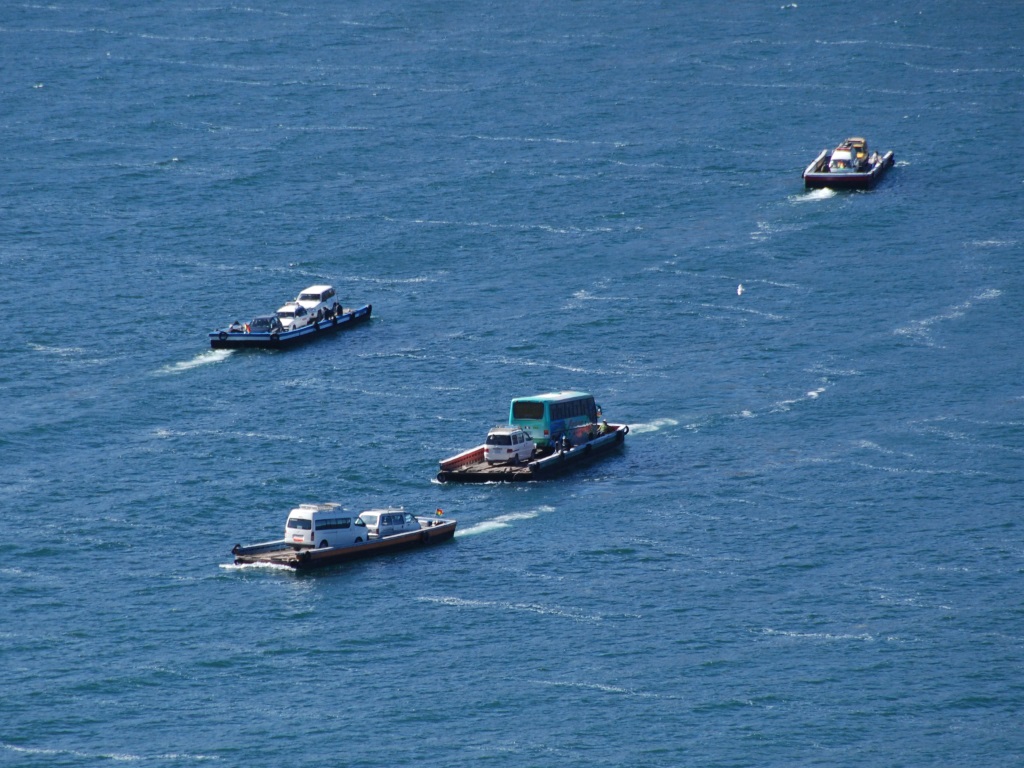
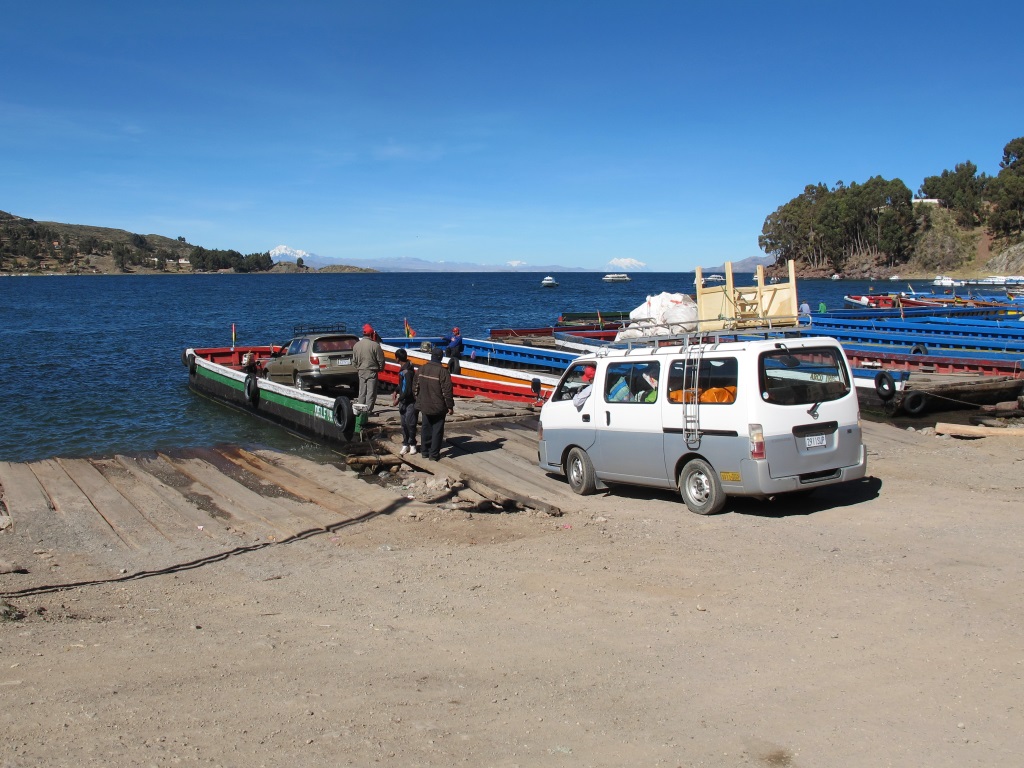
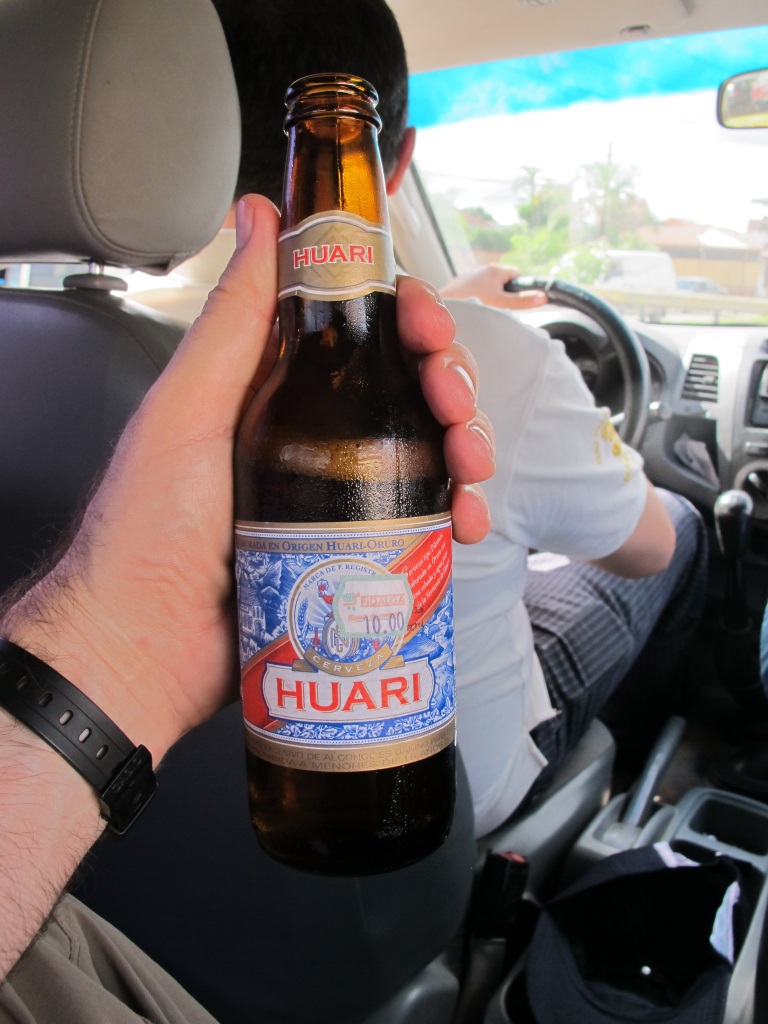
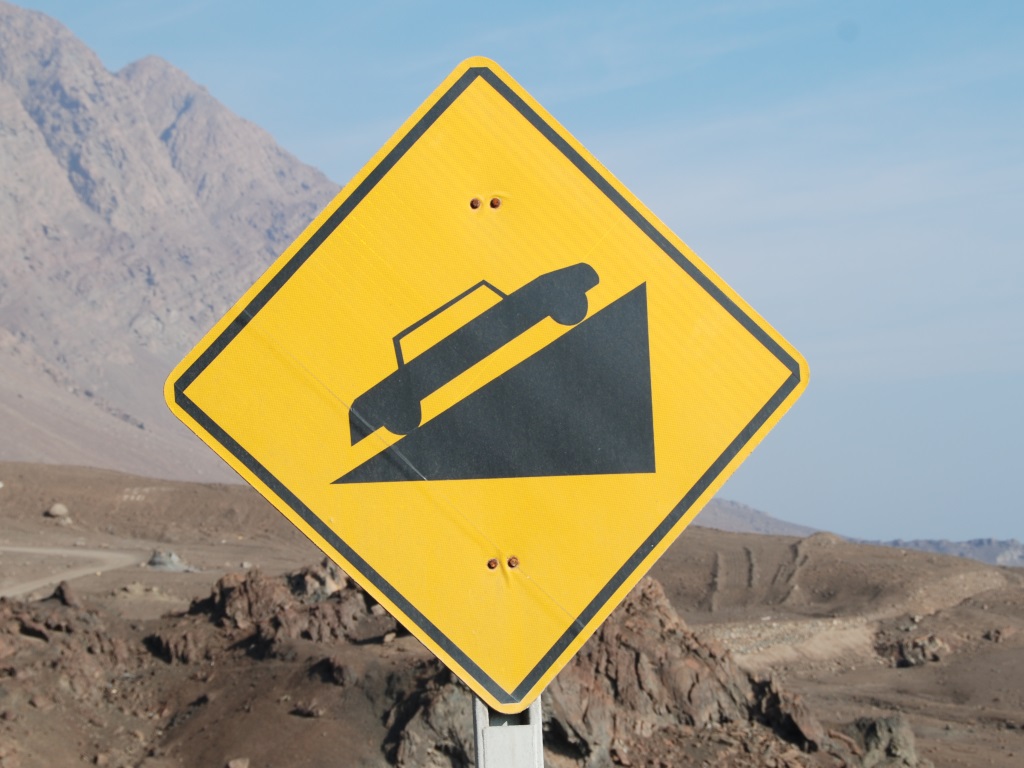
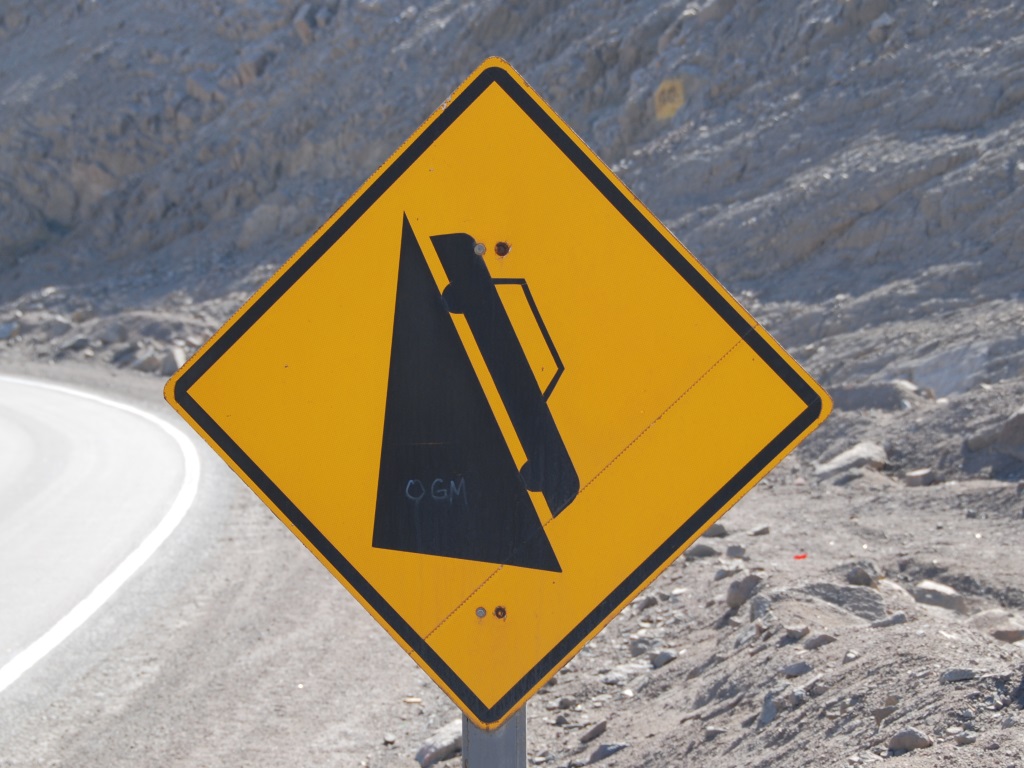
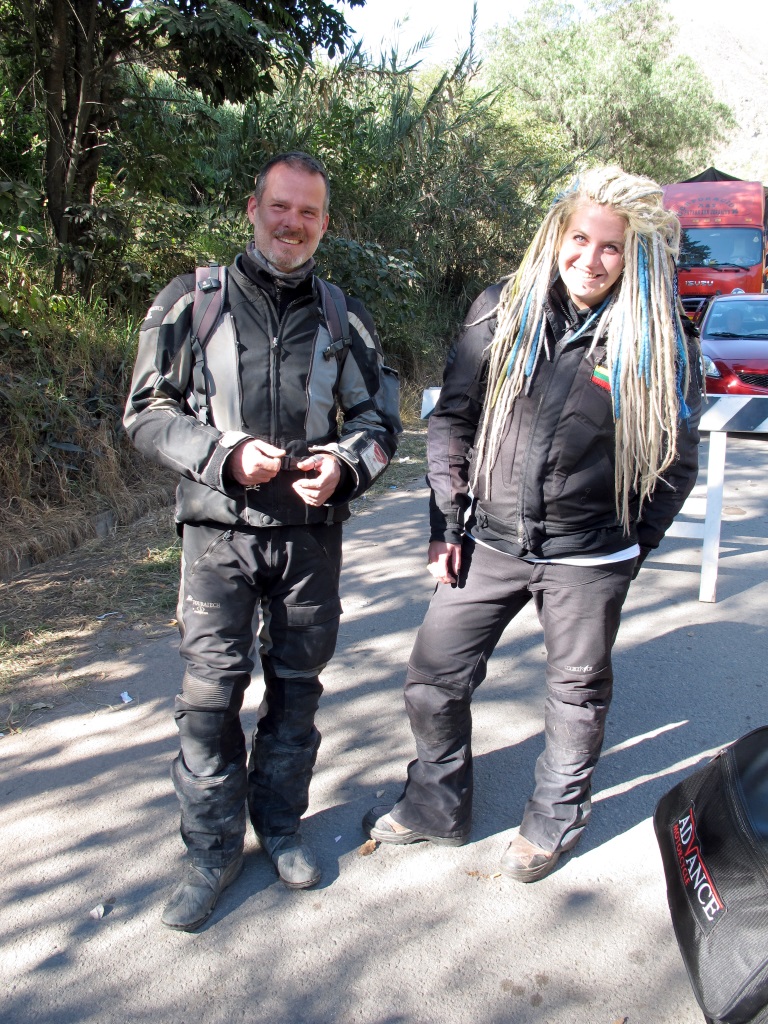
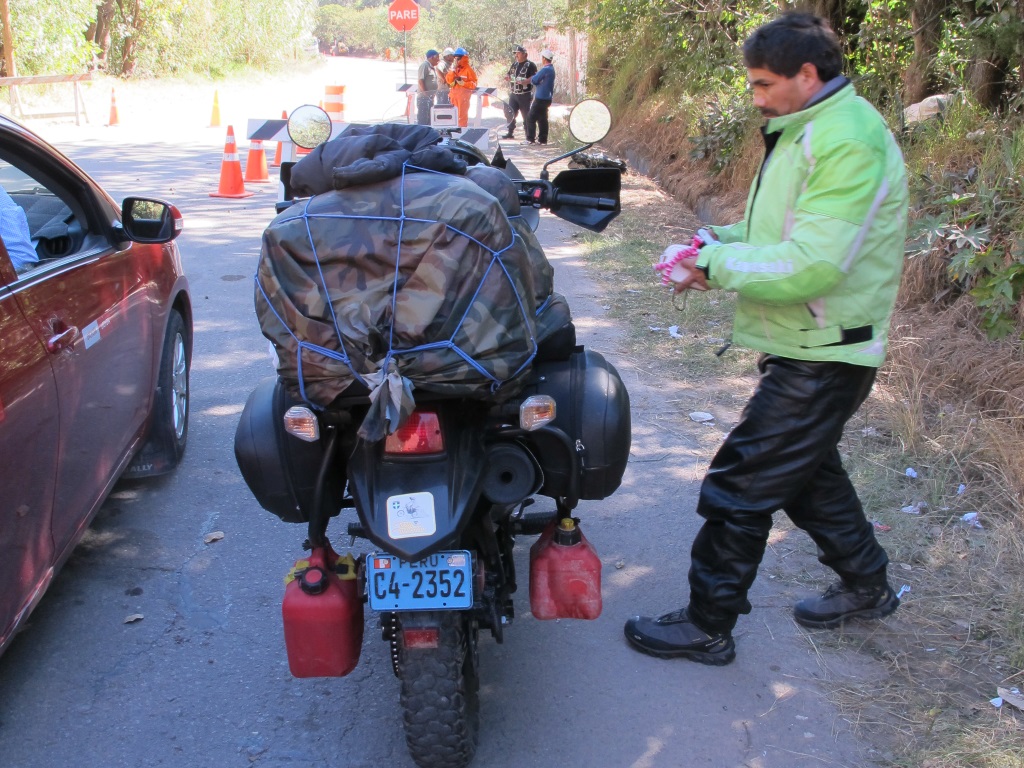
Amazing, as all your other postings. Thanks for sharing your travels, reading your adventures up and down The Americas has been the best travel experience short of doing it in person.
Thank you
I’m glad you enjoyed it, I should have finished it off much sooner